1lumen selects and reviews products personally. We may earn affiliate commissions through our links, which help support our testing.
Wurkkos TS30S Pro review
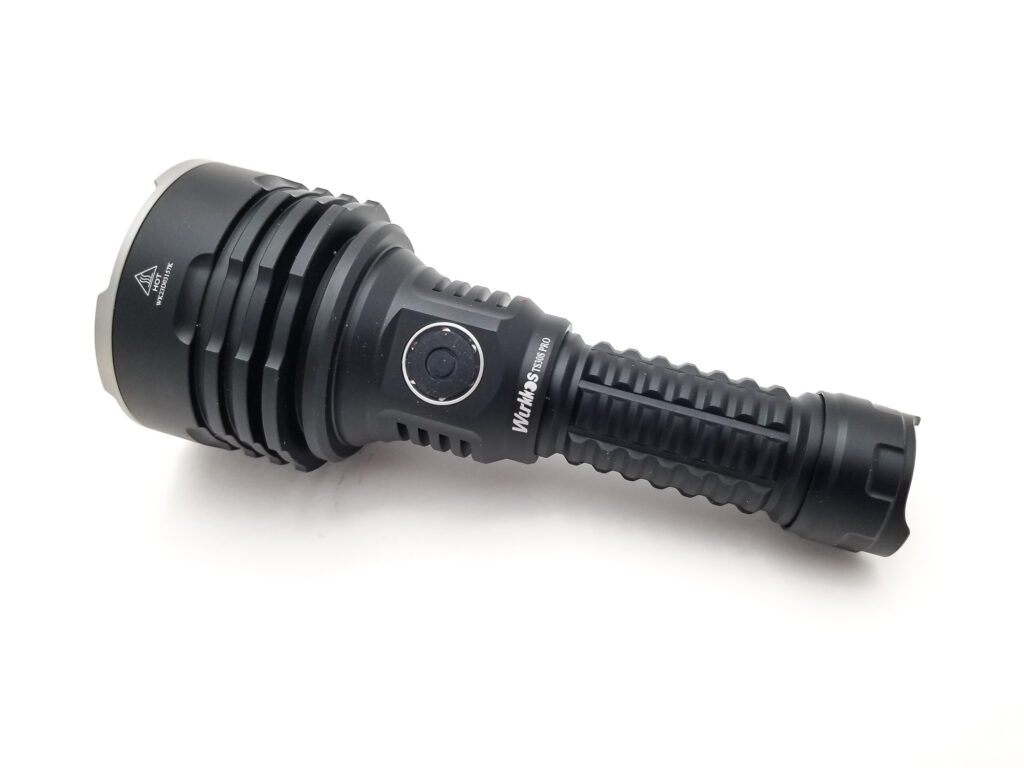
Wurkkos TS30S Pro specs
| Brand & Model | Wurkkos TS30S Pro |
|---|---|
| Flashlight category | throw flashlight |
| LED | 1 x Luminus SBT90.2 |
| Max. output | 6,000 lumens |
| Max. beam distance | 1,086 meters |
| Max. beam intensity | 295,000 cd |
| Battery config. | 1×21700 |
| Onboard charging | Type C |
| Modes | Many, Anduril 2 |
| Blinkies | Many |
| Waterproof | IP68 |
| Review publication date | May 2023 |
Review intro:
Many people in this hobby owe a lot to the lower cost flashlights coming out of the Orient from brands like Convoy, Sofirn (and it’s offshoot brands), Thrunite, and Wuben, whose offerings afford new hobbyists and enthusiasts the opportunity to own decent, powerful flashlights for a fraction of the cost of bigger name brands. Wurkkos, the OEM lovechild of Sofirn, and relative newcomer to the scene has really sprouted in the last two years with newly designed and affordable flashlights that perform very well. Their TS series took the center stage and really took the enthusiast market by storm of late, with one of their offerings, the TS10, making our top flashlights of 2023 honors list. Another member of the TS family has also made quite a name for itself.
The TS30S was released in 2021 as a long-throw, high output, pocketable flashlight rocking the baddest thrower LED of all time (you know the one). It ran ToyKeeper’s franchise Anduril UI, had onboard type C charging, and used 21700 batteries, all at the ridiculously-low price of around $60.00 US (with discounts). This is crazy considering the LED alone ran $40. It was a great light and nothing else could touch it at that price. Well, Wurkkos couldn’t leave it well enough alone and now there’s a new one, the Wurkkos TS30S Pro.We’ll see how Pro it is, and I’m skeptical since Wurkkos hit it out of the park with the TS30S. Moreover, since the previous version was so beloved, this model got a bit of hate mail from folks. Let’s see if it’s legit.
Package quality.
Wurkkos has stepped up the game on their product presentation and packaging of late, ditching the plain-orange and white color scheme cardstock boxes for really nice upscale packaging that’s not indicative of the asking price. The TS30S Pro came in a properly nice box with an outer sleeve with the photos and features. The box is a sturdy one made from thick cardboard overlaid in white with a flip open lid held by magnets. Inside, everything was neatly arranged in foam.
- Wurkkos TS30S Pro flashlight
- Wurkkos-branded 5000 mAh 21700 flat top battery
- USB type C charging cable
- Lanyard
- 2 spare o-rings
- Instruction manual
- Battery advisory card
Nothing to complain about here! Everything you need to get going is here. You don’t even need a charger for the battery since the light has onboard charging. The accessories are of decent quality, but nothing spectacular, and it’s nice to see a lanyard included here.
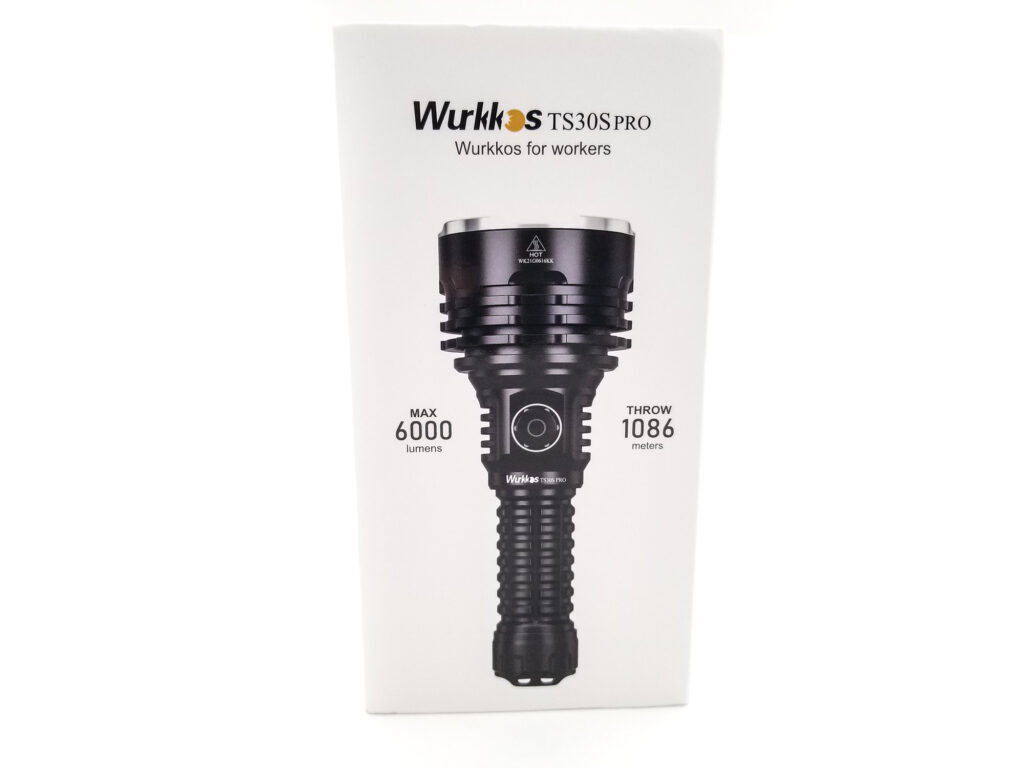
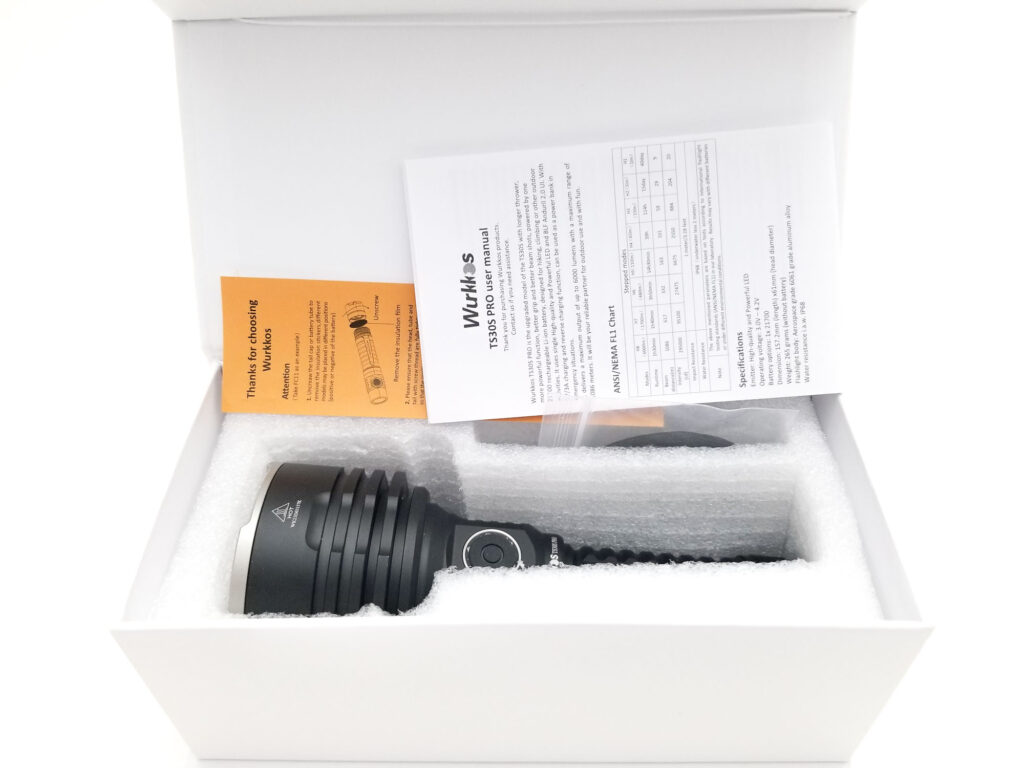
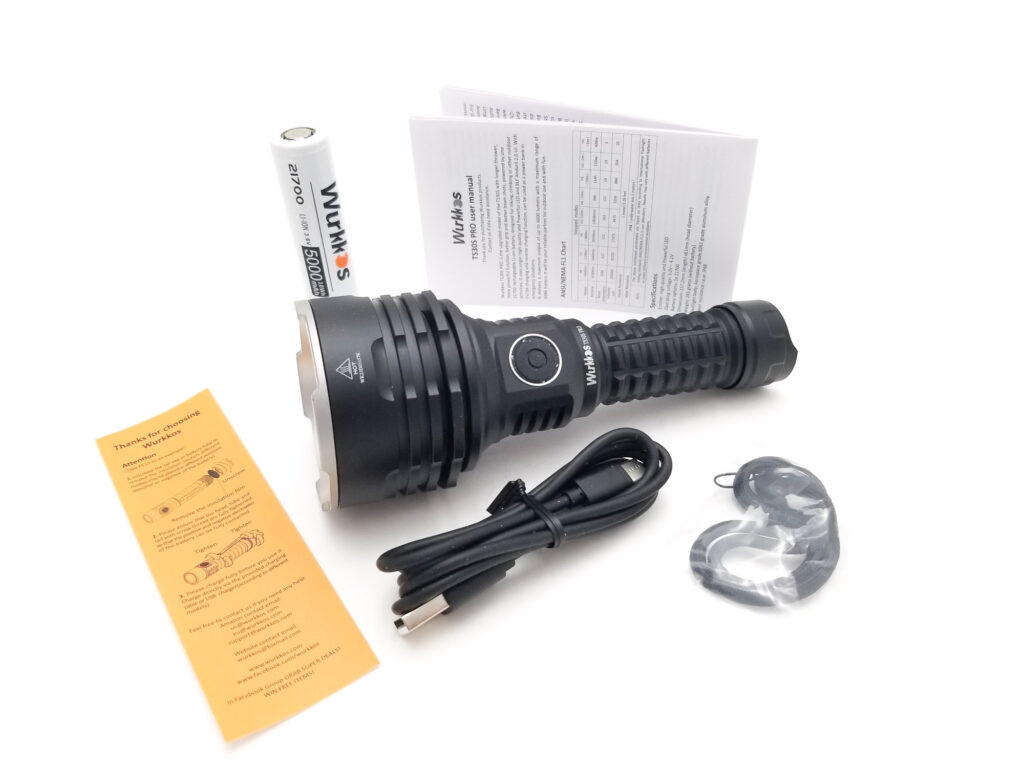
Flashlight in use
The TS30S Pro is a compact thrower flashlight first, and a general purpose light second. The head is big, and it’s too long to be a pocket light, although you could stow it in a jacket or trouser cargo pocket. I think the TS30S Pro would be happiest on a lanyard or in a holster on your belt though.
Handling-wise, no complaints, and it’s actually a very handy, maneuverable flashlight! The 21700 size battery tube is about the perfect size for most every human-sized hand out there, and has a very aggressive pattern milled into it that aids in a super-secure grip. You don’t need to have a Kung-fu grip to hold onto this thing, and any grip position was comfortable. There’s a single set of lanyard holes in the tailcap, and they’re adequately sized to pass the included lanyard through, so no eternal struggle required for that. Thanks Wurkkos! The head has a lot of finning, with thick heatsinking fins for cooling.
Switching duties are handled by a single e-switch at the head. It’s set in a good spot that’s easily reached, and has a wide, flat rubber boot that’s not too grippy, but nice to touch. It’s not as easy to find by feel though, and again, found myself poking incessantly at the charge port opposite the switch sometimes. It is lighted, and features the neat aux LED backlighting found on the TS25 and TS10. This time, these RGB and multicolored LEDs are located under the switch boot, and work the same way with funky and somewhat functional color switching all configurable through Anduril 2.
More on that later.
The switch is not bad, but not good either. The clicks aren’t as snappy and feedback is a bit soft while being a little too easy to click, but it works fine. Tail standing is possible, but the small tailcap has totally unnecessary cutouts on the side which makes me wonder if this tailcap was an existing rear clicky design borrowed from the Sofirn parts bin and altered for use on the TS30S Pro.
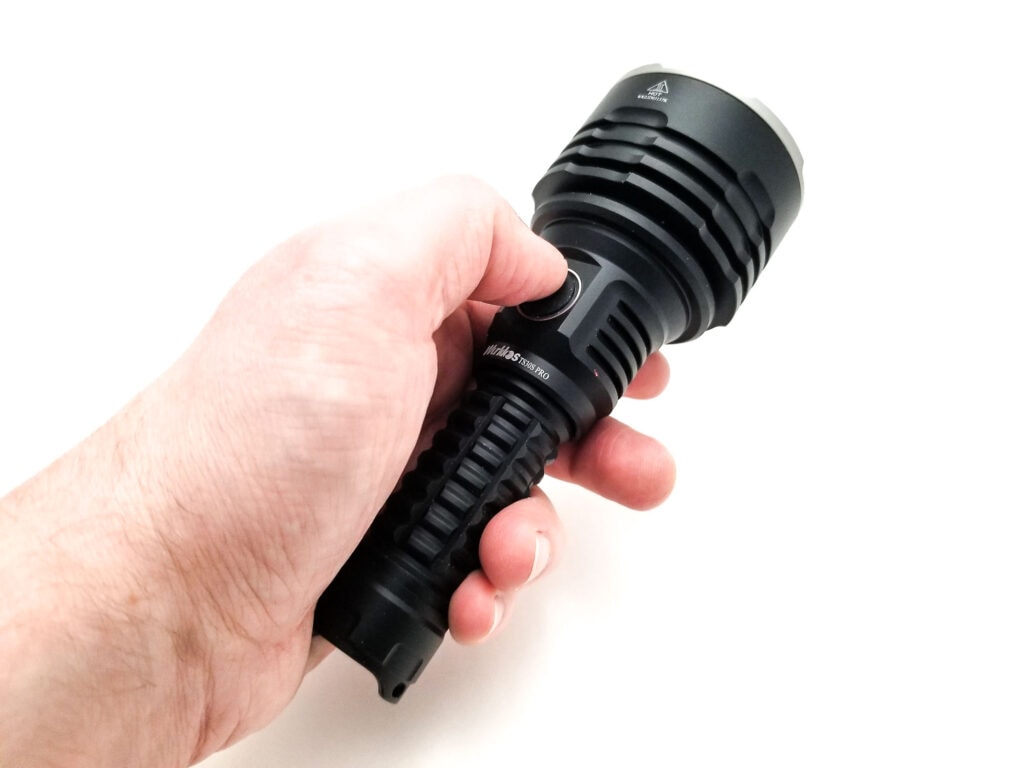
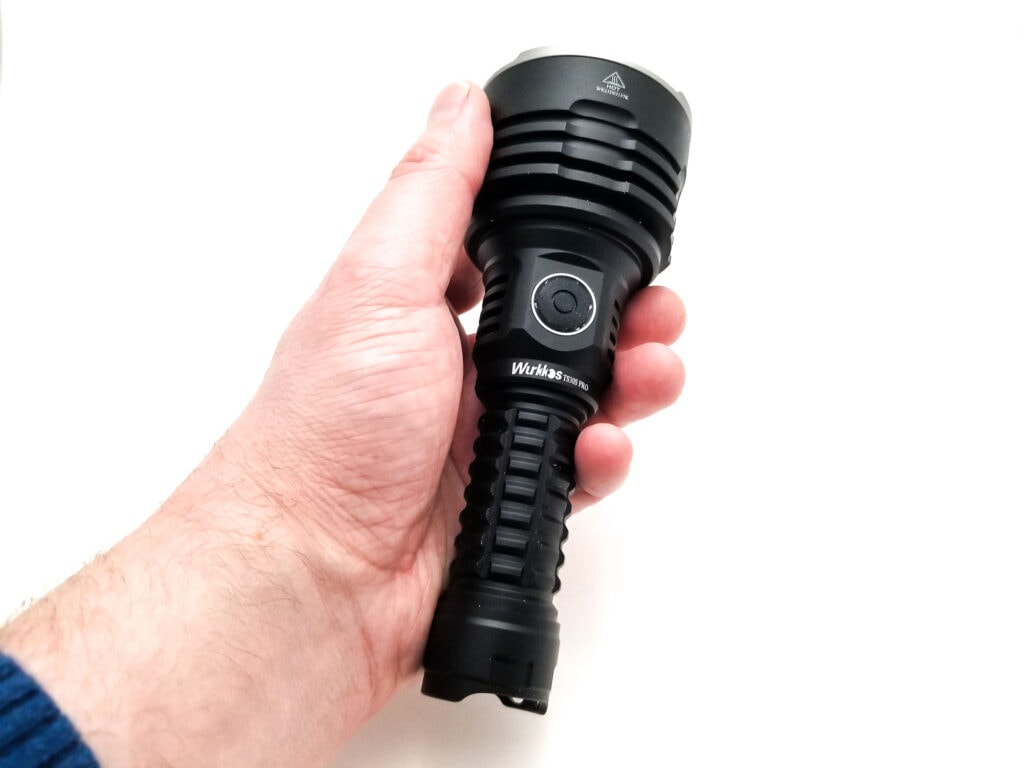
Build Quality and Warranty
One of the appeals of Wurkkos products is the price point, and it was a major selling point of the first TS30S. That light could be had, on sale, for about $65 with the battery, an unheard of amount of money for a light equipped with an SBT90.2. The LED alone is 70% of the purchase price. This Pro model is coming in around $10 more on sale, so it’s not the stupefying value it once was, but still a great value nonetheless.
Usually sacrifices are made and the obligatory corner-cutting with lights like these isn’t uncommon. Previous Wurkkos products I’ve reviewed were hit and miss quality-wise, but nothing obvious sticks out here, so that’s a win. Quality-wise, there’s no major faults. It passed the maracas test fine, and there’s no out of place gaps or misaligned parts, and everything lines up nicely. Milled from 6061-T6 aluminum, the machining is free of obvious defects. The reflector and lens were free of defects or detritus as well.
The bezel is bead blasted stainless steel, and it’s also nice and tidy. The finish is type III HA, and the finish is matte which I really prefer. It’s nicely done and was free of defects. The light is milled from aluminum alloy, so probably 6061-T6. All the edges are knocked down and smoothed as well, something lacking on Sofirn lights and even some higher-end lights I’ve had. The bezel is probably glued down, as my efforts to loosen the bezel netted only moderate straining and grunting sounds.
The driver is probably glued in and swaps a spring for a brass contact, which is pretty common on these lower-priced lights. The tailcap features a non magnetic copper alloy spring that’s pretty beefy and gold plated. It’s pretty short also to aid in current-handling (which this needs). The battery tube is reversible, and the threads are thick, fully anodized, rectangular cut and pretty smooth with plenty of lube from the factory.
Both ends are o-ring sealed, and the charge port cover (obviously pulled from the Sofirn parts bin and found on the SP series lights) creates a nice seal. For ingress protection, Wurkkos gives the TS30S Pro an IP68 rating, which is very generous for a cheaper light. I think this light would be okay for temporary immersion or heavy rain, but don’t count on it surviving being submerged..
Warranty? Wurkkos, take it away! Within 30 days of purchase: Contact the original seller for repair or replacement. Flashlights: Within 1 year of purchase: Contact wurkkos for repair or replacement accessories. In the first instance we attempt to resolve the issue. In the unlikely event of a faulty product we may advise customers to return the product to wurkkos for repair or replacement. Please Note: This warranty does not cover normal wear and tear, modifications, misuse, negligence, accidents, improper maintenance, or repair by anyone other than an Authorized retailer.

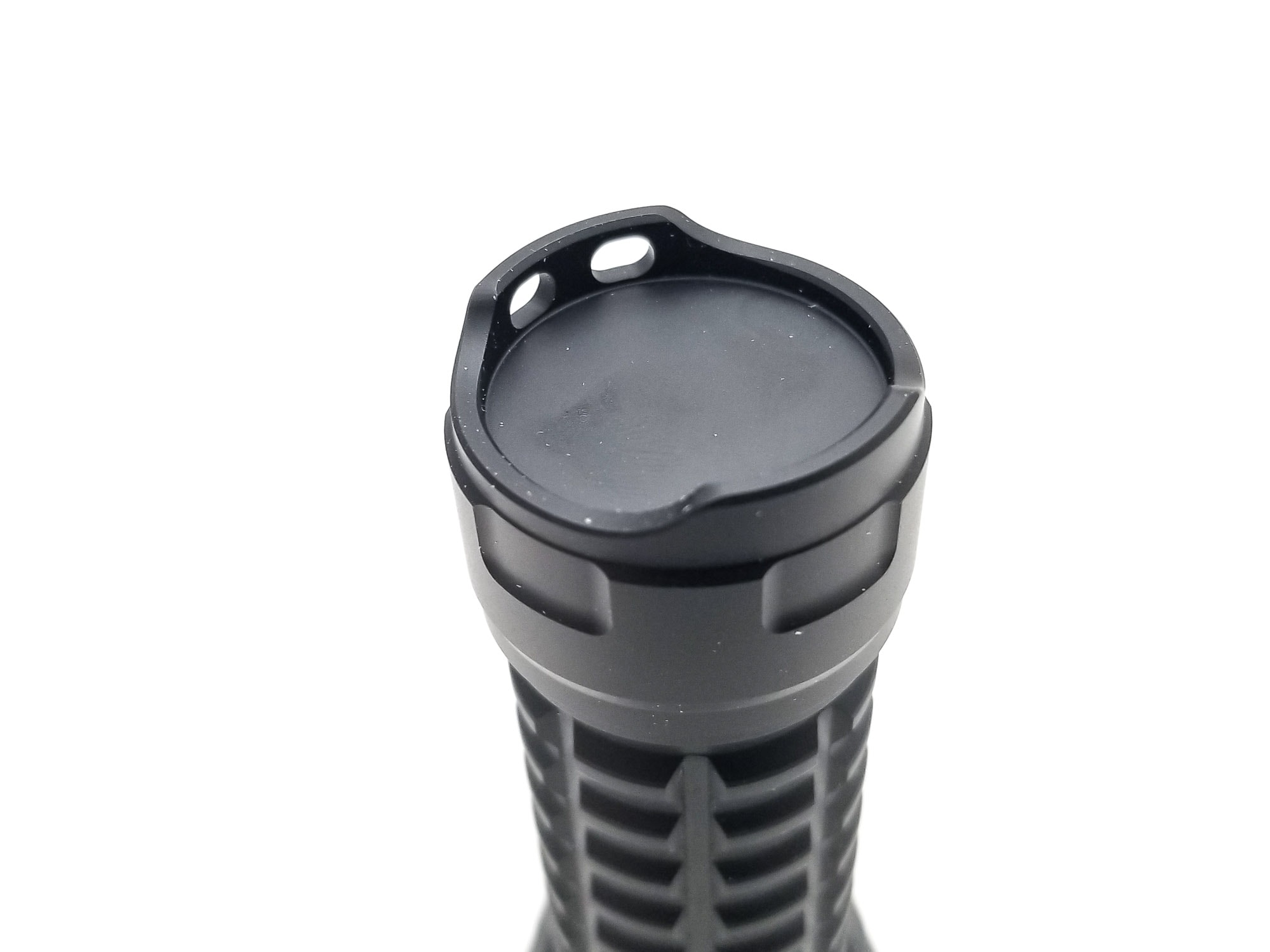
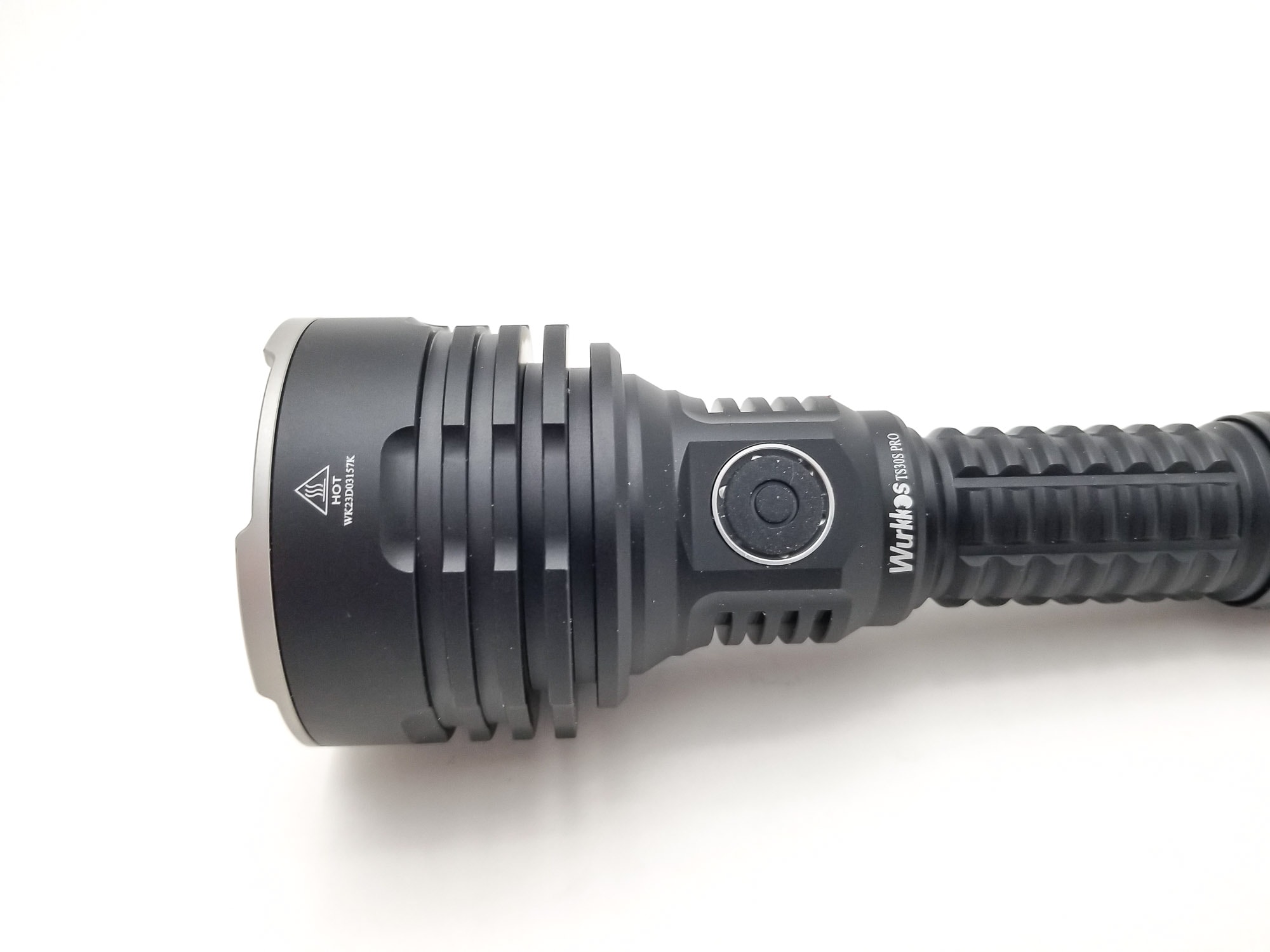
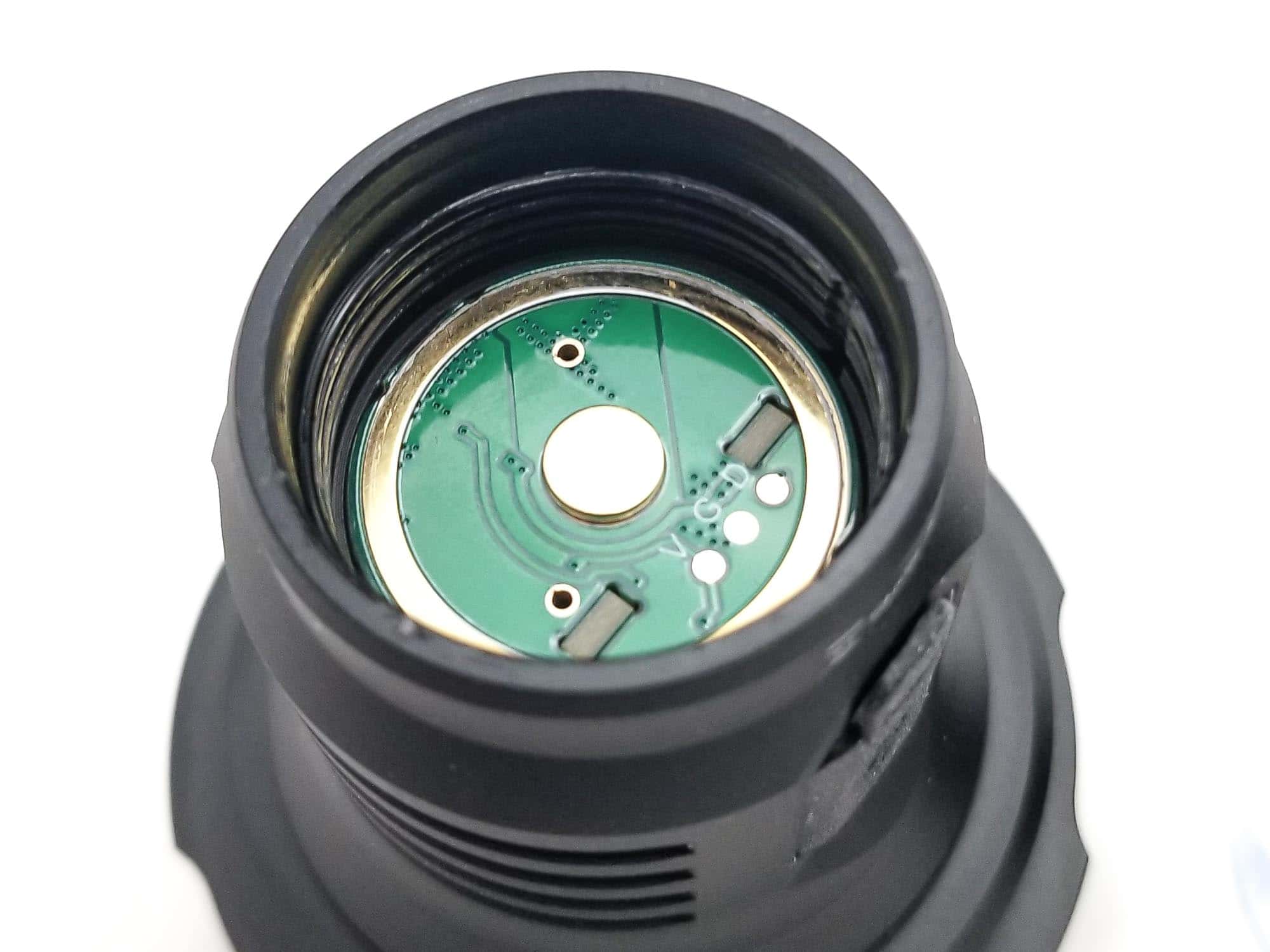
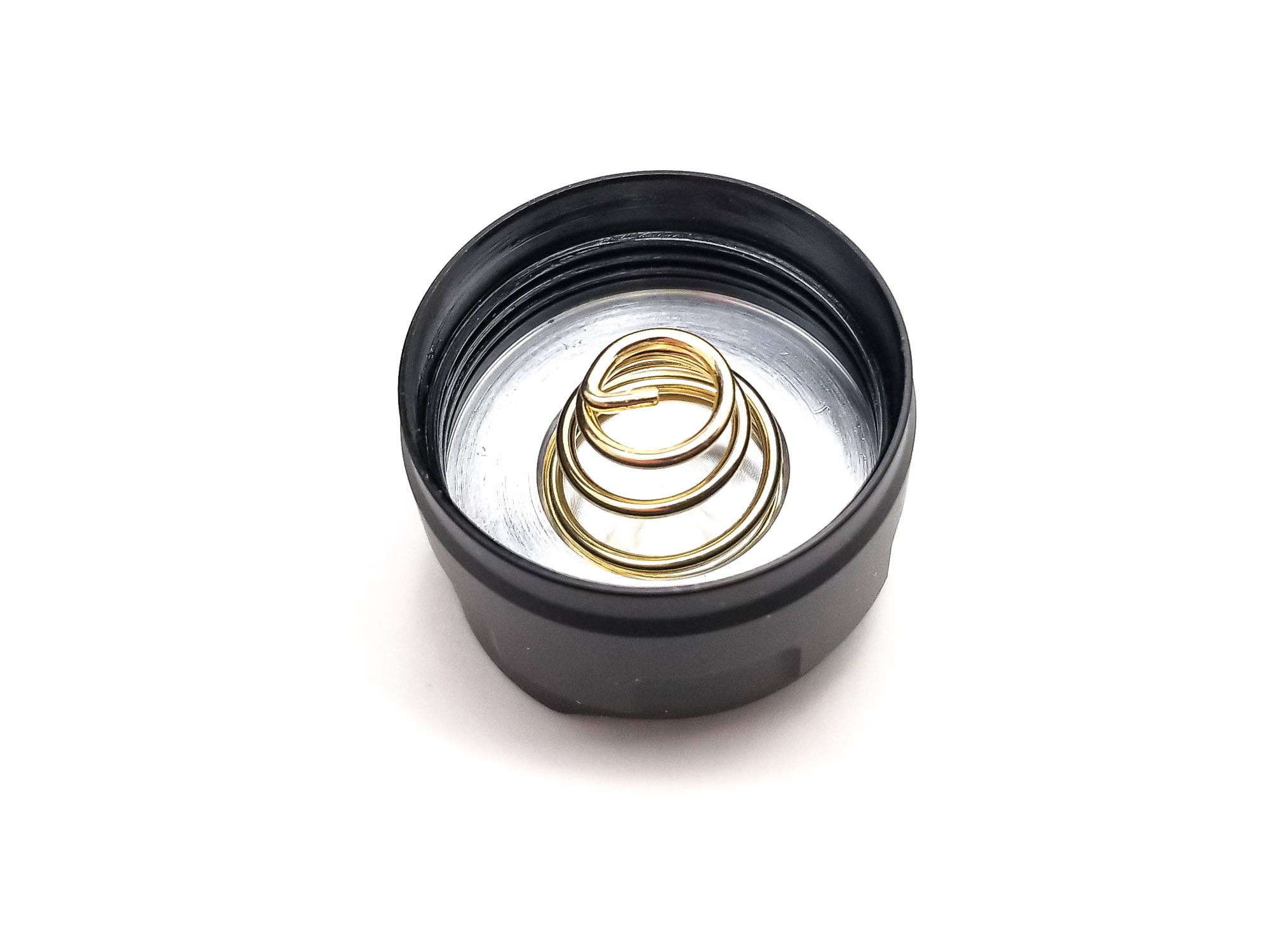
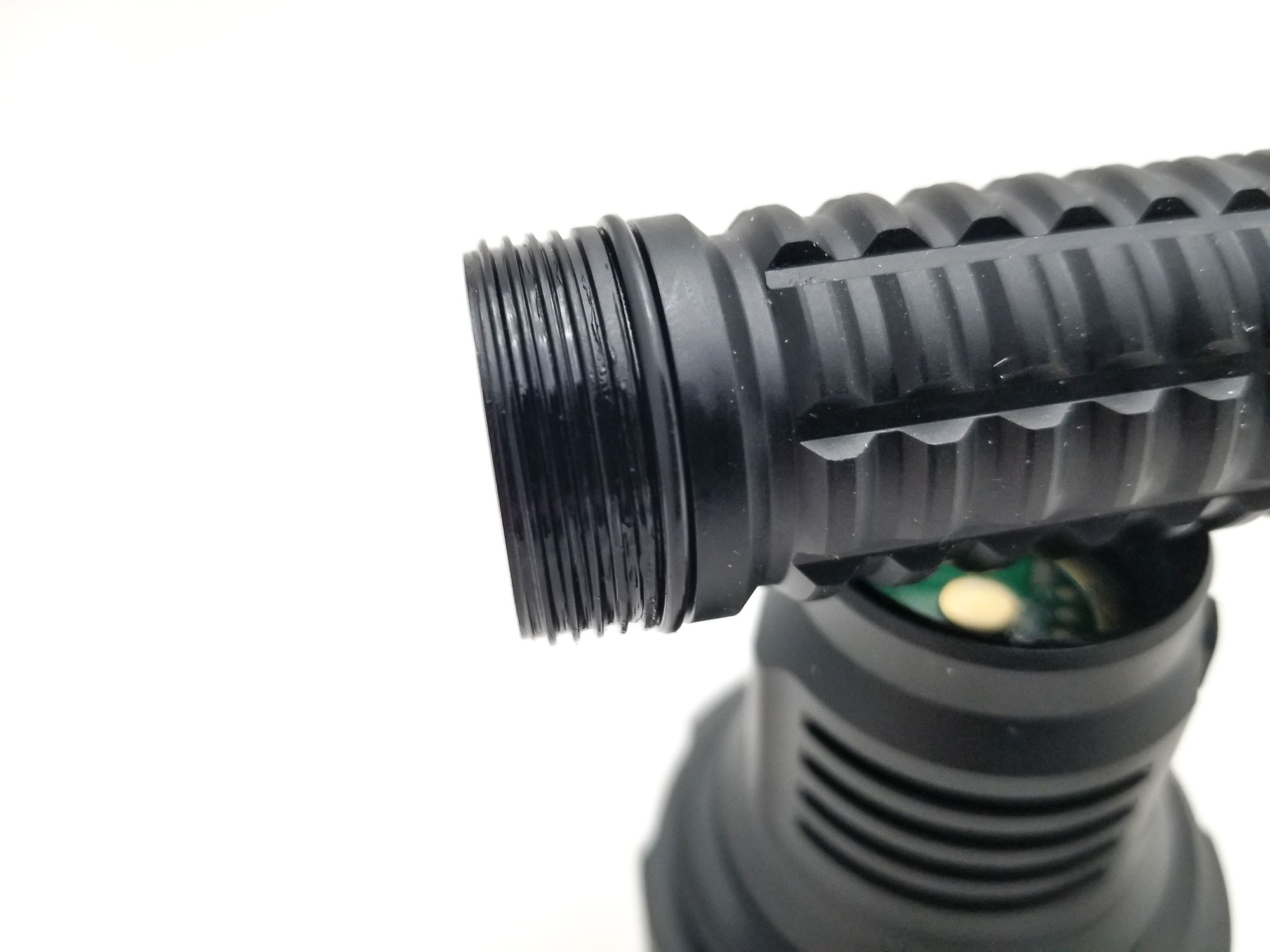
LED, Lens, Bezel, Beam, and Reflector
The LED is unchanged from the first release of the TS30S, and it’s what made it such a hit and hot potato seller for Wurkkos. While there’s all kinds of LEDs out there that make a regular flashlight a thrower, like the Osram W1, W2, Cree XP-L, and Luminus SFT-40-W, there’s one LED that makes those others hold its beer when it walks into the room: The Luminus SBT90.2. Even in small reflectors, it can throw over 500 meters while producing around 4,000 Lumens…from a single LED. For those curious, the SBT90.2 is the second generation of Lumunus’ specialty white 3 volt LED, the SBT90.2.
It wasn’t designed for handheld flashlights, but for panel lighting, fiber optics, borescopes, endoscopes, and directional light sources needing hgh lux and output. This thing delivers. It’s set on an 11×11 footprint, and the LES is a highly homogenous 3mm x 3mm die, for a total emitting area of 9mm2 with very uniform light distribution. With a low forward voltage it can pull a lot of current when direct driven, with typical drive currents of around 24 amps and produces very high cd/mm2, which is why it’s one of the best thrower LEDs out there with some of the farthest-reaching non LEP throwers sporting it. The tint is spec’d as 5700K and at 2 meters from the sensor on L7, the Opple lightmaster Pro shows a CCT of 5469K and CRI Ra 63.5. The duv is 0.0077, so a bit positive towards the green side, but overall the tint isn’t bad for a cool white LED.
The bezel is nicely matte stainless steel with deep crenulations. Gone is the slightly cool, but mostly comical ‘murder bezel’ sold with the previous TS30S, and I’m fine with that. This one extends above the lens about 8 mm for drop protection. The lens is a mineral glass unit with an AR coating on both sides to cut down on the green tints we get with pretty much every Luminus LED out there.
The reflector is a smooth deep cup unit 52 mm in diameter. It’s slightly larger than the prior light, and the extra diameter helps it focus the beam a bit tighter. The LED is nicely centered in the reflector, but despite the increased throw distance, this change has been the source of duress from some buyers since the beam, while possessing better throw, now has more artifacts in the form of bright rings.
The hotspot is also smaller and more intense, and some like that, some don’t. I never owned the original TS30S, so I can’t say either way, but I noticed only slight rings only on white walls. Outside, the rings were there, but so faint they weren’t distracting. To be fair, this is more of a thrower than a general purpose or EDC light, so the beam cleanliness is less important, and I’ve tested both general purpose and thrower lights with worse beams.
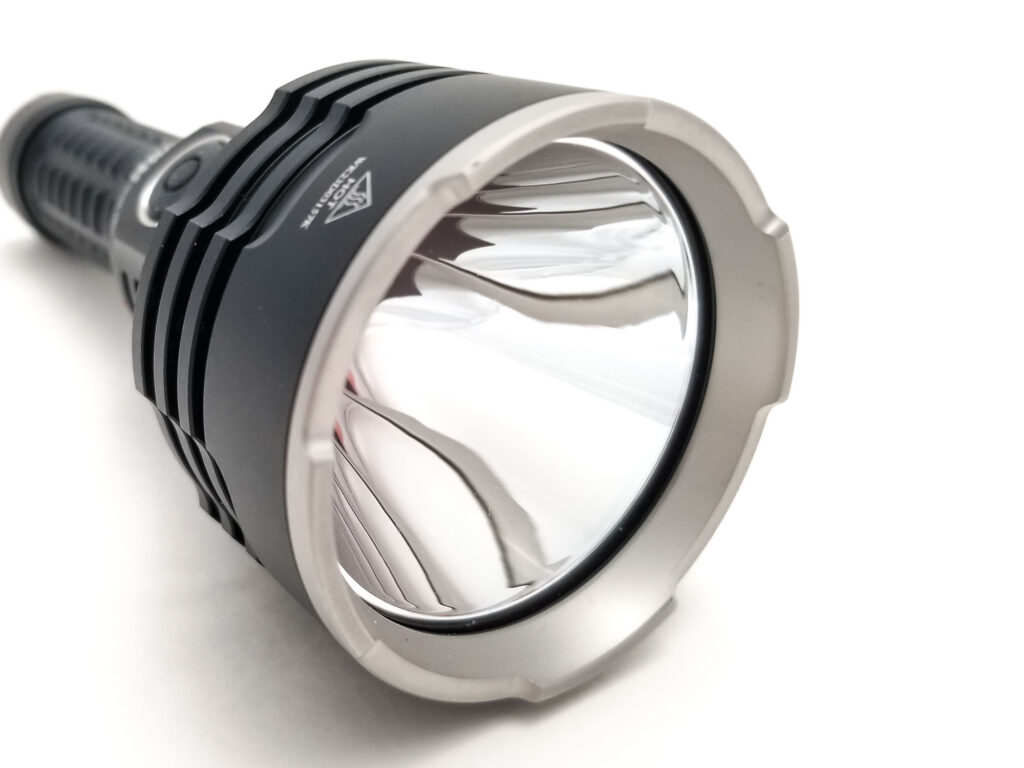
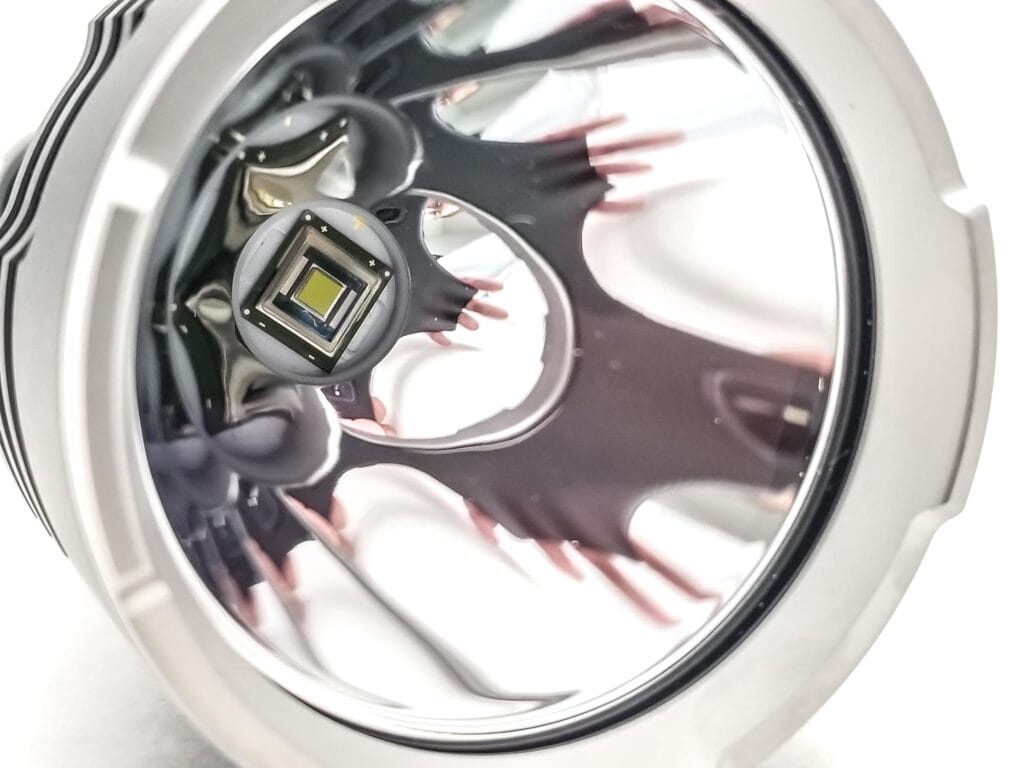
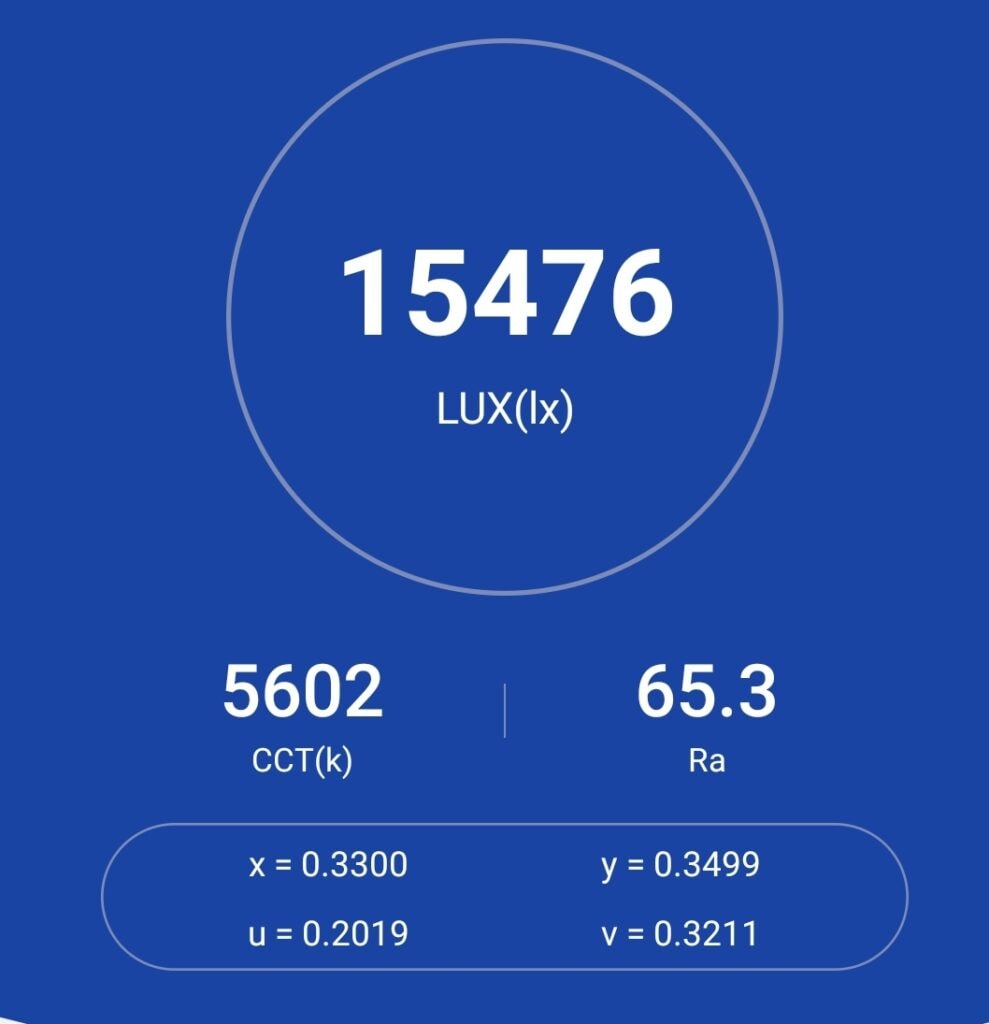
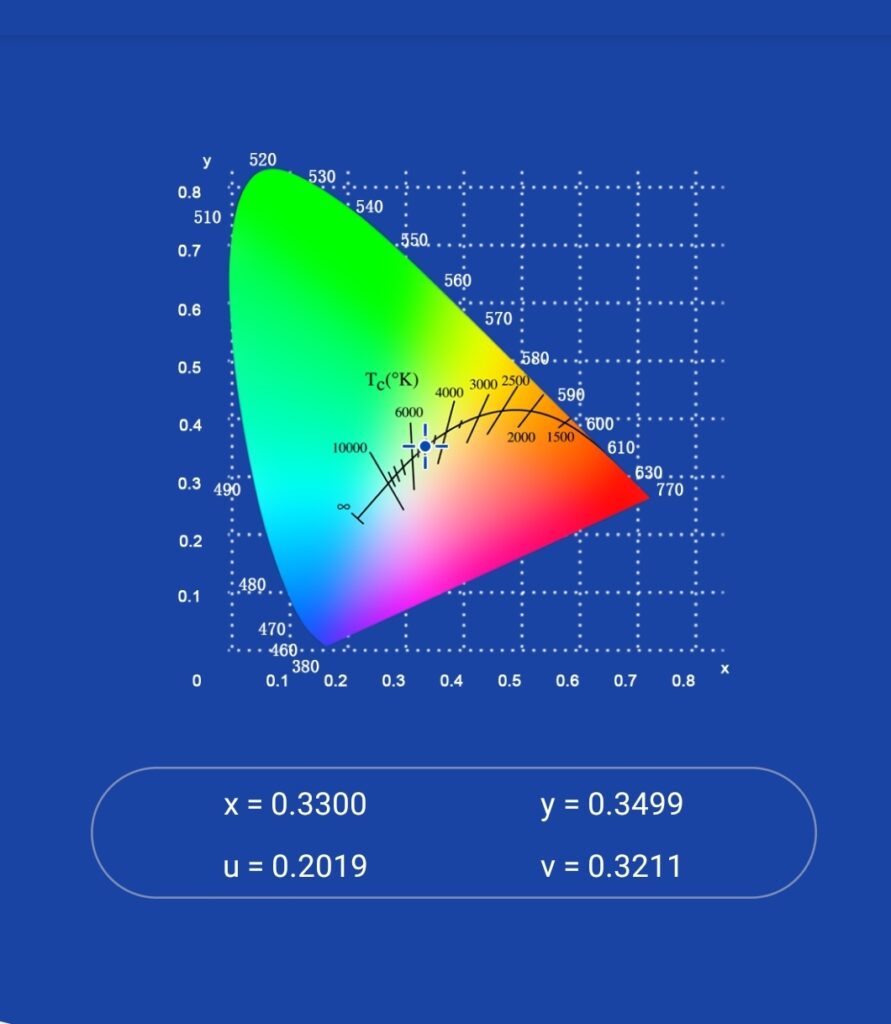
Dimensions and its competition
Dimensions:
| Wurkkos TS30S Pro | Millimeters | Inches |
|---|---|---|
| Length | 162 mm | 6.4 in |
| Head diameter | 61 mm | 2.4 in |
| Body diameter | 34 mm | 1.3 in |
Dimensions are rounded to the nearest millimeter, and to the nearest tenth of an Inch.
Weight:
| Wurkkos TS30S Pro | Weight in grams | Weight in oz |
|---|---|---|
| Without battery: | 261 g | 9 oz |
| With included 21700: | 330 g | 12 oz |
Weight is rounded to the nearest gram, and to the nearest tenth of an Oz.
Flashlight size comparison with its competition:
Group 1 left to right: Acebeam L19, Speras T3R, Wurkkos TS30S Pro, Thrunite Catapult Pro, Convoy L21B
Group 2 left to right: Acebeam L19 V2, Acebeam L18, Wurkkos TS30S Pro, Natfire SF2 (LEP), Thorfire C8
Group 3 left to right: Wildtrail WT90, Wurkkos TS30S Pro
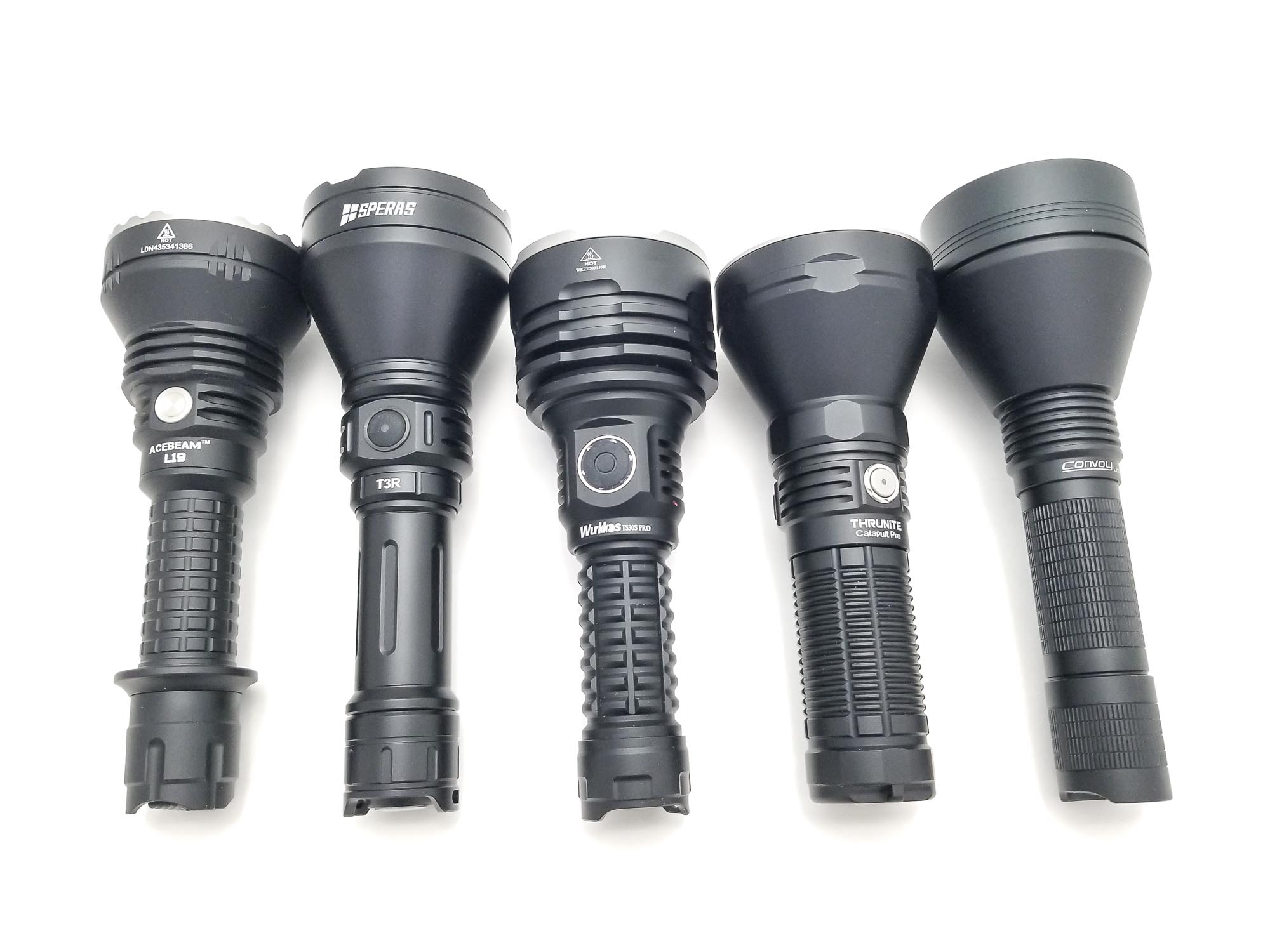
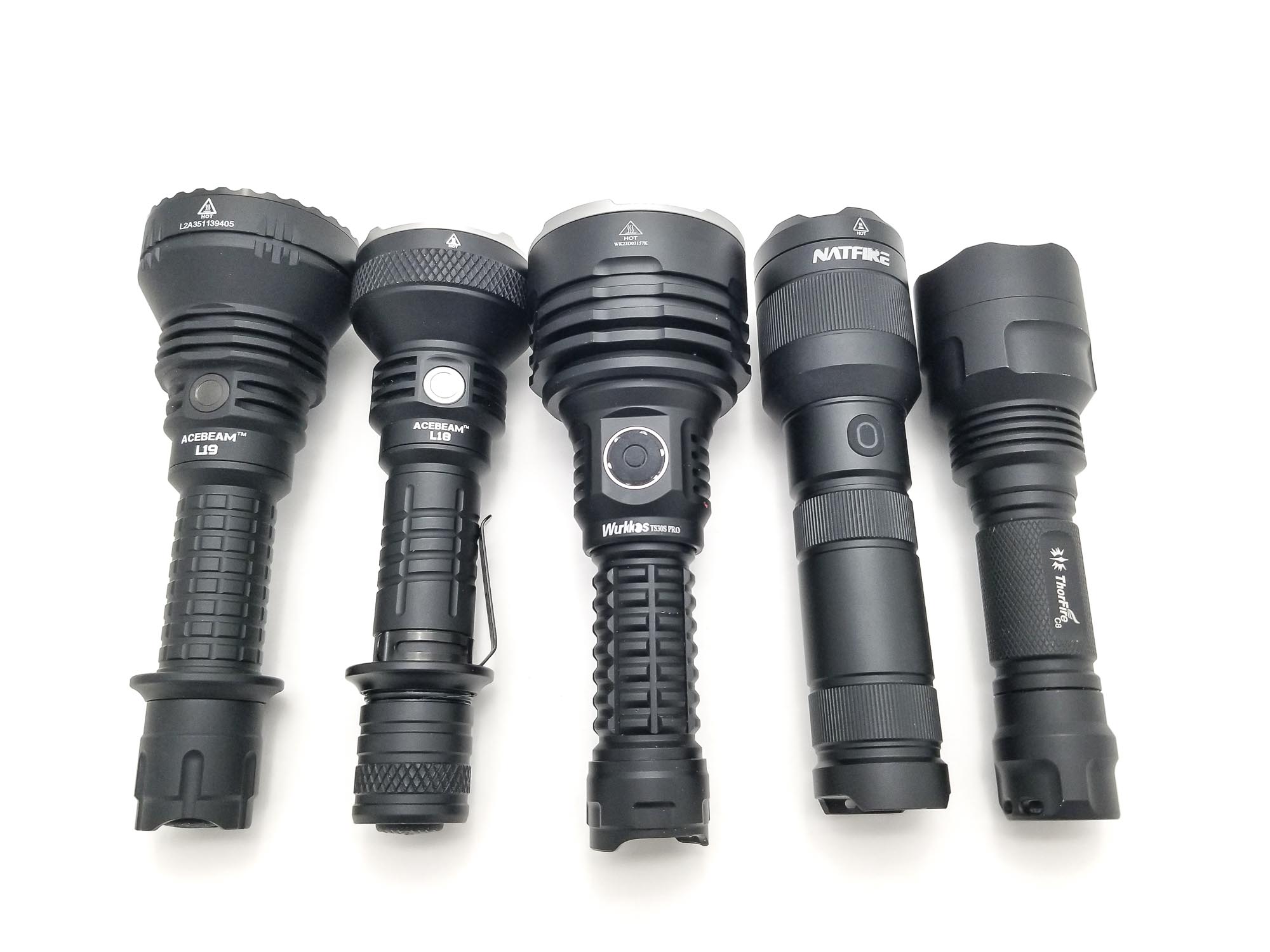
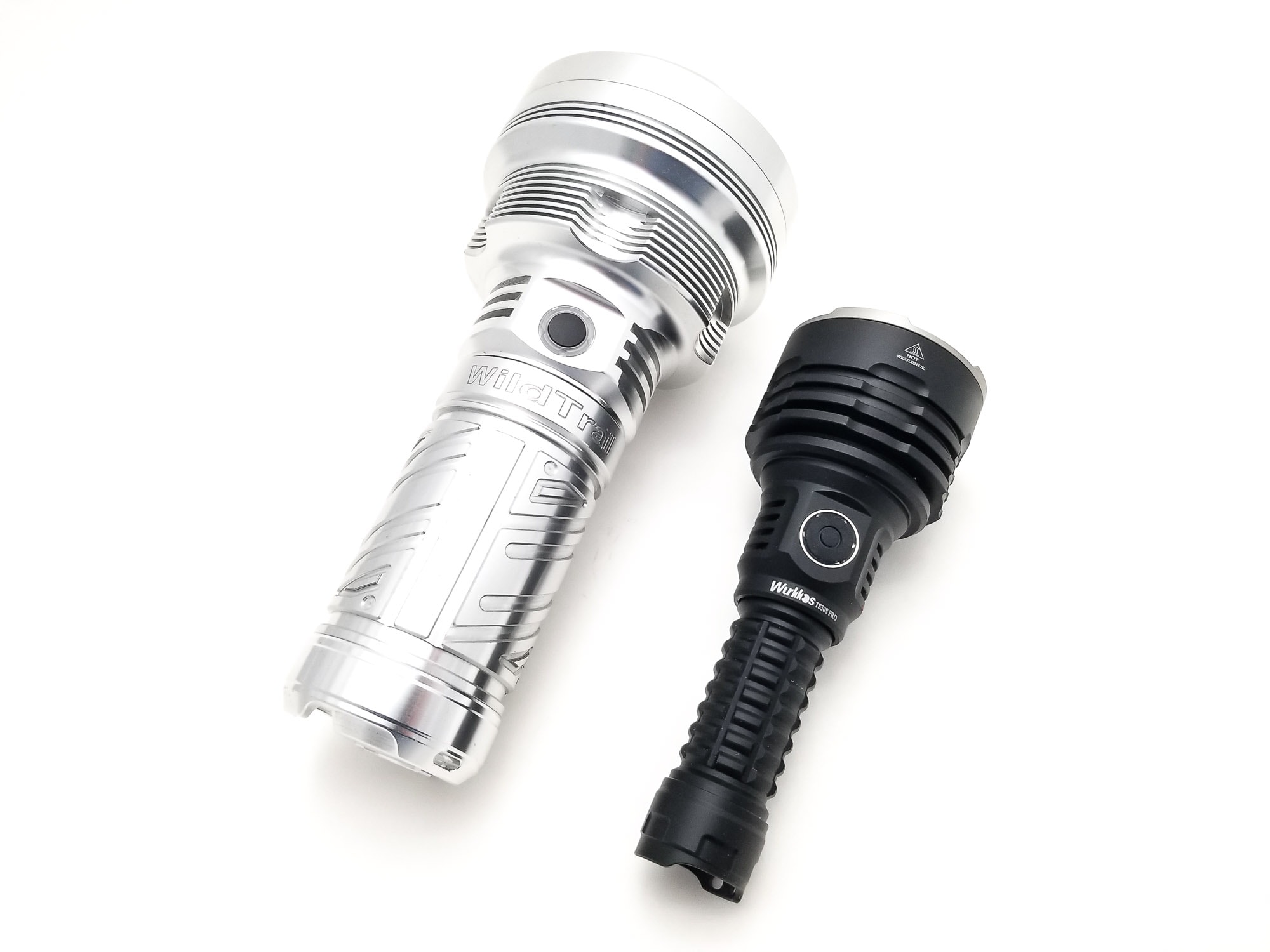
Wurkkos TS30S Pro UI: User Interface and Driver
This light runs a single cell 3 volt LED, and like other hotrod Wurkkos lights, it’s going to have a linear FET driver with brightness controlled by PWM. There could also be a 7135 linear regulator for lower modes up to 350 mA. The UI is none other than Anduril 2, ToyKeeper’s franchise UI for enthusiasts. The original TS30S had OG Anduril, so this is a nice update. The funky RGB aux LEDs we saw in the TS25 are also present here, albeit they’re now on switch LED duty.
Anduril 2 User Interface
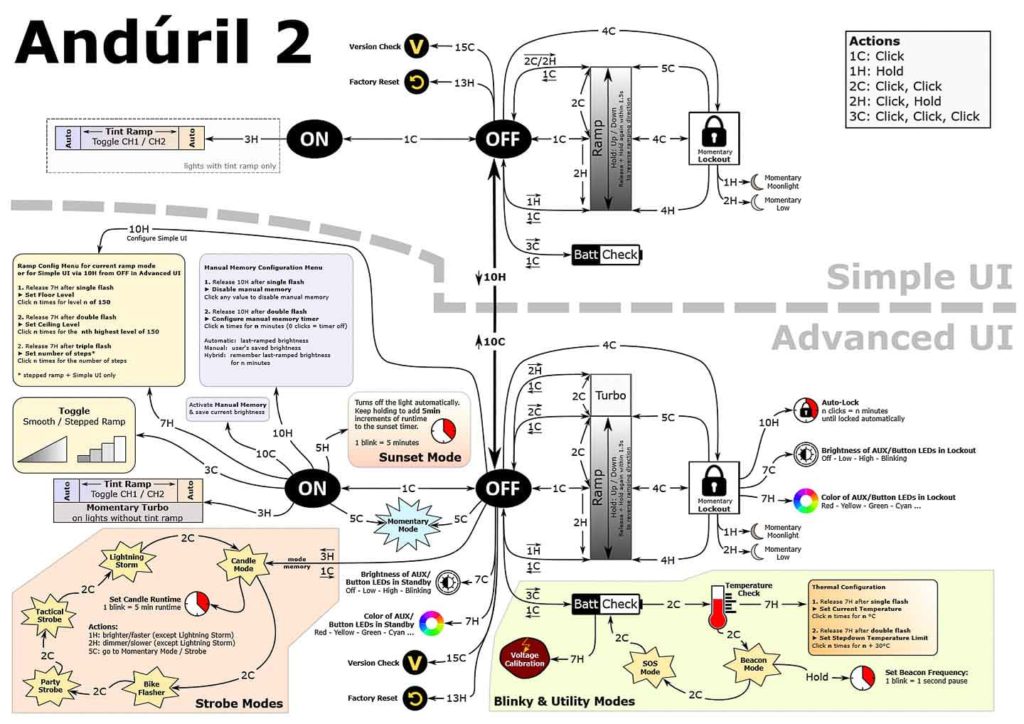
Here is another Anduril 2 image.
And by default, it uses the Simple UI… and here is the UI diagram:
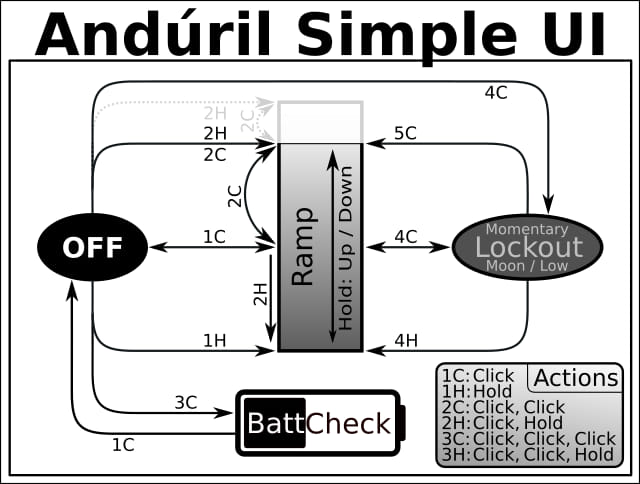
Anduril2 has two UI’s available: Simple and Advanced. The light came with the Simple UI enabled, and I think it’s kind of a misnomer because it’s still a little complicated for a first-time user. However, those familiar with the original will pick it up pretty quickly. Simple UI is missing some of the familiar features present in the original, namely the special blinky modes, temp check, and thermal configuration (those are present in the Advanced UI), and there’s no “muggle” mode either. You still get access to smooth ramping (stepped is, you guessed it, only available in Advanced UI), lockout, momentary high, battery check, and some useful lock/unlock modes.
The Advanced UI is appropriately named because it’s, well, advanced and there’s a plethora of options and configurations available. There’s probably way more features than the average user would ever dip into, but it’s nice to know you can tweak things like the voltage sensor calibration for batt check, AUX LED settings, and even configure the auto-lock. I found this to be a pretty useful feature that enables the light to automatically turn off after a certain amount of time if the light is accidentally activated.
Modes: Simple and Advanced UI both have many standard and blinky modes available, but the main modes are stepped and smooth ramping, but stepped ramping is only available in Advanced UI, and smooth is enabled in both Simple and Advanced.
Switch to Advanced UI from Simple: 10 clicks, but hold on the 10th click
From OFF:
- Press and hold: Turns on in either smooth or stepped ramp (depending on which mode is enabled)
- Single click: Turn on in last mode (step or ramp state-again depends on which mode)
- Double click: Ramp ceiling/turbo
- Triple click: Battery check (in Simple and Advanced UI)
- Triple click and hold: Special strobe modes-remembers last used (in Advanced UI)
- Quad click: Lockout mode. In lockout mode you have different options available:
- 1 click: momentary moon (bottom of ramp)
- 2 clicks: momentary (higher floor)
- 4 clicks: turns on in ramp mode
- 4 clicks with a hold: on in ramp mode, lowest/floor
- 5 clicks with a hold: on in ramp mode, highest/ceiling
- 10 clicks with a hold: configure the lock timeout threshold (in Advanced UI only). This is a new feature for Anduril2, it allows you to set a timeout to the lock, where the light will lock after a pre-set elapsed time.
From ON:
- Press and hold: Ramp up (depending on the mode)
- Single click: Turn off
- Double click: Ramp ceiling/turbo
- Double click and hold: Ramp down
- Triple click: Toggle between smooth and stepped ramping (in Advanced UI only)
- Quad click: Lockout mode (see above for the lockout options)
Mode memory:
- Yes, memorizes last on state setting either smooth or stepped ramping, but does not remember blinkies
Low voltage warning:
- Yes, when in operation, the light steps down brightness gradually until turning off when the cell is around 2.9 volts.
Strobe/blinkies
- Yes, many! The blinkies are accessible from off with 3H (click click click-hold) in ADVANCED UI only. You switch between strobe modes with 2 clicks:
- Candle mode
- Bike flasher
- Party strobe
- Tactical strobe
- Lightning storm
Lock-out mode:
- Yes. In Simple or Advanced UI, lockout is accessed by 4 clicks from on or off. 4 clicks to unlock. The lockout enables momentary operation in the moon mode, however, 2H (click click-hold) enables low mode. There are other lockout modes available (see the diagram).
Temp check and thermal calibration mode
- In the first version, you could do both the ambient temperature sensor calibration and thermal ceiling at the same time, but in Anduril2, it’s a little different. When in temp check, click 7 times and hold on the 7th to enter the thermal configuration. To configure the ambient temp, wait for the first flash and then set the ambient, but once you’ve done that, you need to go back to the temp check and click 7 times, hold on the 7th, this time, don’t let off the button. Wait for the 2nd blink, and then you can set the thermal ceiling.
RGB AUX LED Control
- The RGB aux LEDs have 4 modes by default, accessed the usual Anduril way with 7C: Off, Low, High, Blinking in each color mode
- The RGB option adds color control, accessed by 7H: Red-yellow (red+green), green, cyan (green+blue), blue, purple (red+blue), white (red+green+blue)
- There’s a special ‘Disco’ option with random colors, and a Rainbow mode (colors change in order)
- The ‘Voltage’ option assigns different colors based on battery voltage: > 4.4 V red+blue+green, 4.1-4.4 V purple, 3.9-4.1 V blue, 3.7-3.9 V cyan, 3.5-3.7 V green, 3.3-3.5 V green, 3.3-3.5 V yellow, 2.9-3.3 V red. Below 2.9 V the LEDs turn off (or are supposed to).
Additional info: Anduril 2 is one of the most advanced, well-featured UIs on the market, but that also makes it complicated. I appreciate the addition of a ‘simple mode’ which is fine for novices, but enthusiasts will immediately dive into Advanced Mode for some hardcore tweaking action since there’s a maddening amount of parameters to finagle and settings to tweak. If you’re a tinkerer, Anduril 2 just might satisfy your urge to mess with stuff (or you might mess something up and throw your TS30S Pro out the window).
Either way, and all things considered, if you aren’t going to be doing lots of tweaking, this UI will probably be fine for a novice with some basic tutelage. The thermal ceiling was set to 50 C out of the box, and checking the calibration showed it was accurately calibrated for ambient temperature. If you want to get the most out of the light, you’ll want to bump the thermal limit up to 60 C. I found that to be the sweet spot since it’s still cool enough for handheld use on any mode besides L7 and Turbo (although you can tweak the levels for L7 to dial it to a more comfortable level). The aux LEDs work fine, although I found some of the features a bit gimmicky and unnecessary. I honestly would have been happy with just the voltage feature, but go figure.
Wurkkos TS30S Pro Charging and batteries
The TS30S Pro uses a 21700 size li-ion battery for power, pretty much a gimmie for modern flashlights. Wurkkos bundled the review light with their bog standard 5000 mAh 21700 flat top li-ion cell. It is a familiar face in the Wurkkos and Sofirn camp made by Lishen with the vent on the negative terminal. It’s a good cell and somewhere in between a Panasonic NCR21700A and a Samsung 50G good for around 15-20 amps max. I put it in my VapCell S4+ and got around 15 milliohms on the internal resistance.
Flat top unprotected batteries fit fine, and standard length button tops fit, but longer protected button tops were a bit too long and Turbo would trip most protection PCBs. If you want top performance, you won’t get it with the included cell.
A Samsung 40T, Molicel P42A, or Samsung 30T gives the highest output. The TS30S Pro features onboard USB type C charging and that’s a nice feature to have, especially if you don’t have a separate battery charger. It’s also bidirectional, so it can act as a power bank to charge your devices in a pinch. You will need a USB C to C cable though (not included).
The charge current is set to 15 watts or 5 volts 3 amps for both charging and the power bank, which is nice. With a partially discharged battery, my Ruideng AT35 USB A to C and USB C to C testers showed 4.9 V and 2.93 A. On type C to C with the power bank showed 4.9 V and the same 2.9 A, but sometimes went a bit higher! The battery termination voltage was between 4.17 and 4.18 volts.
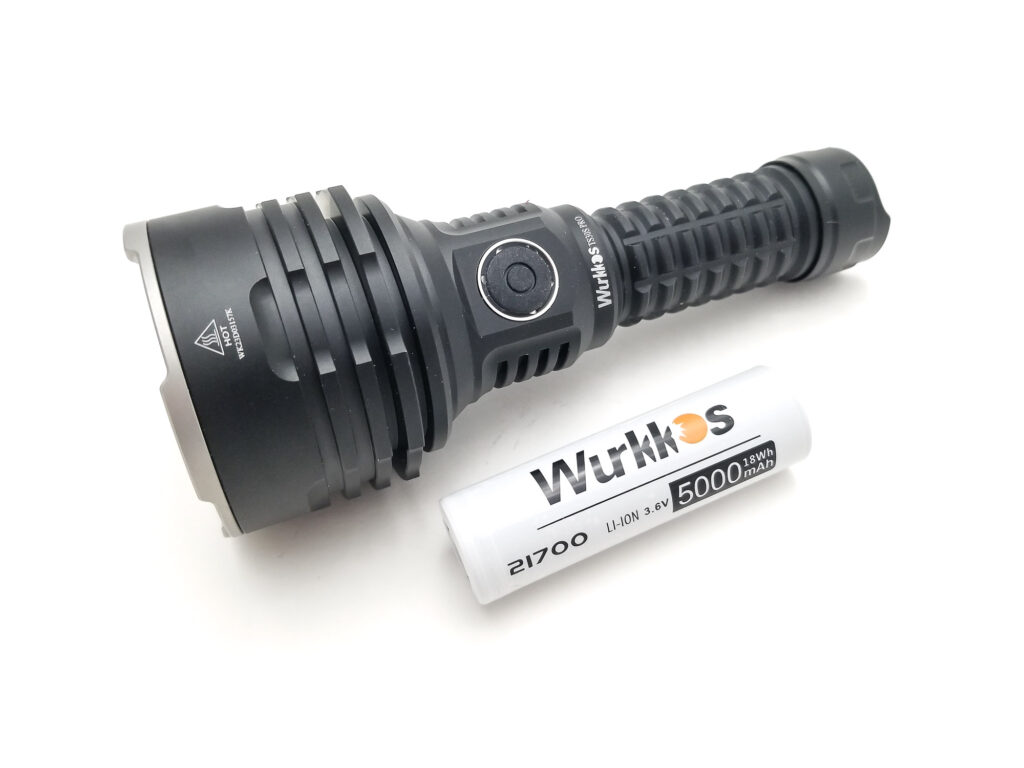
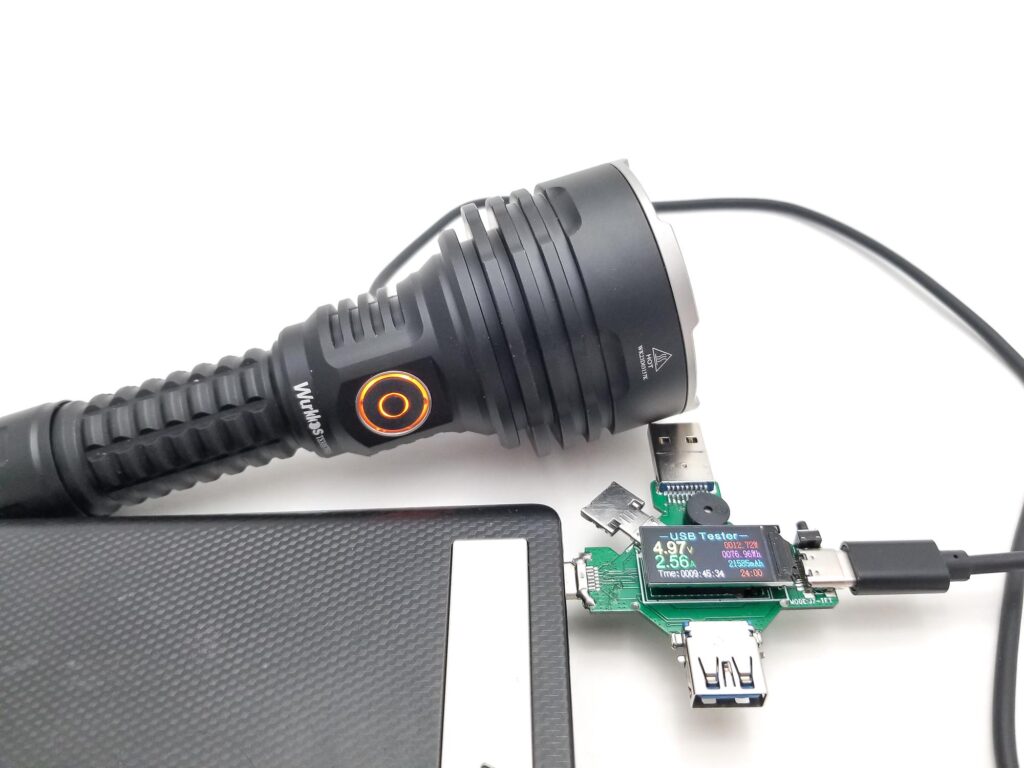
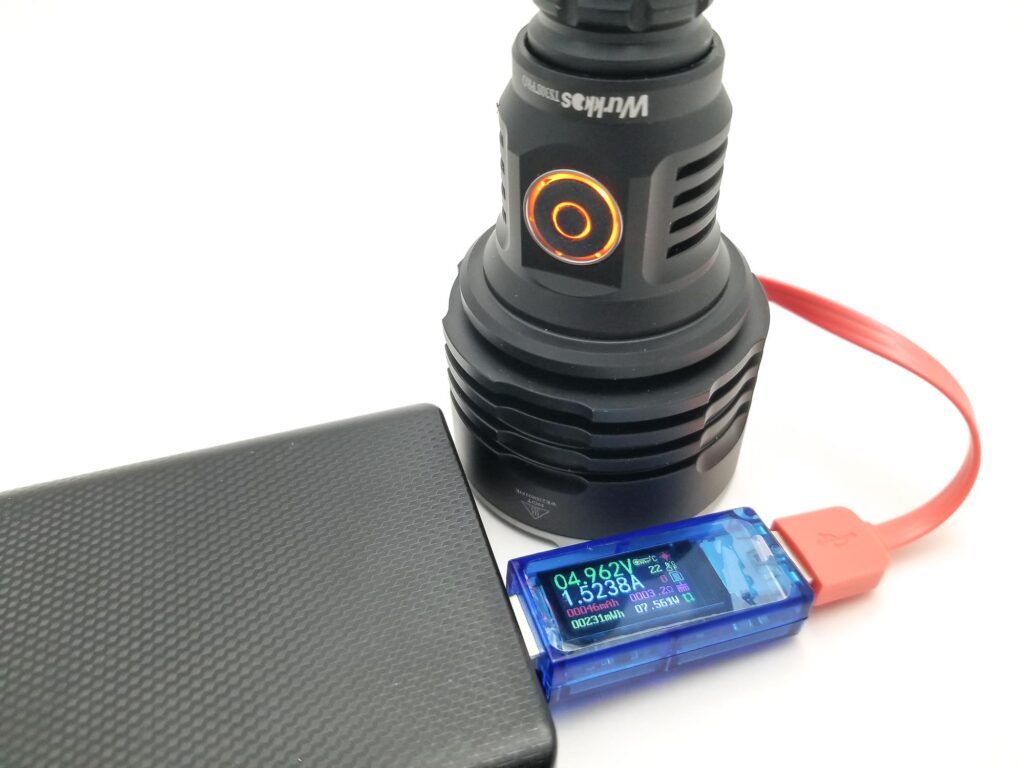
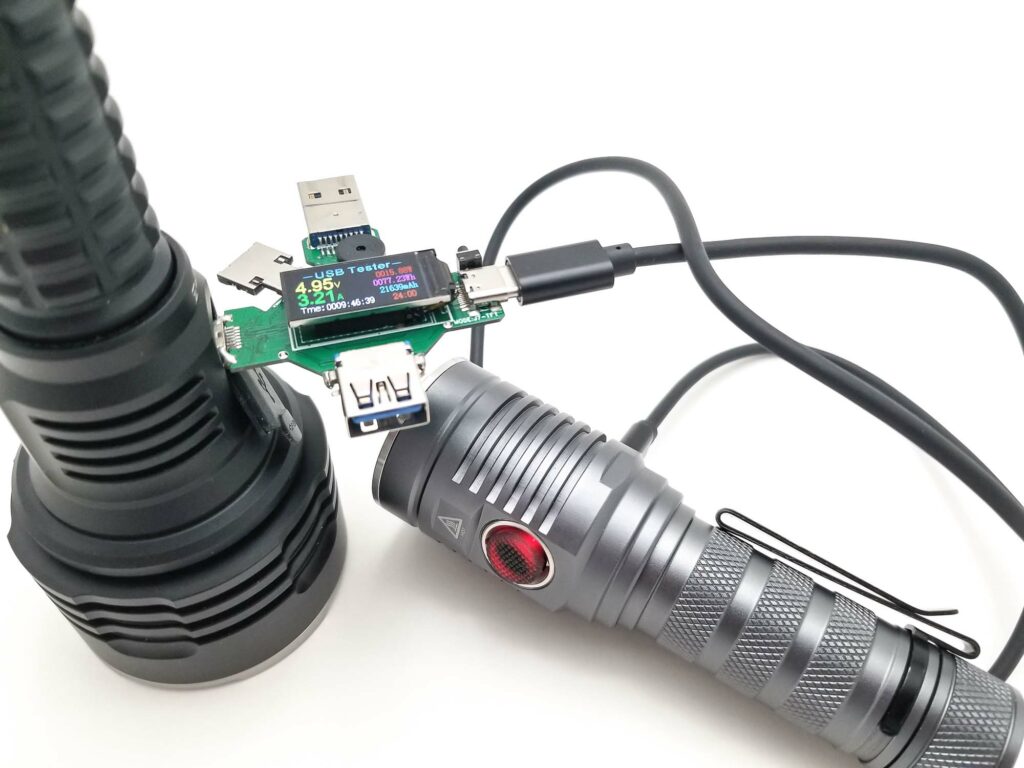
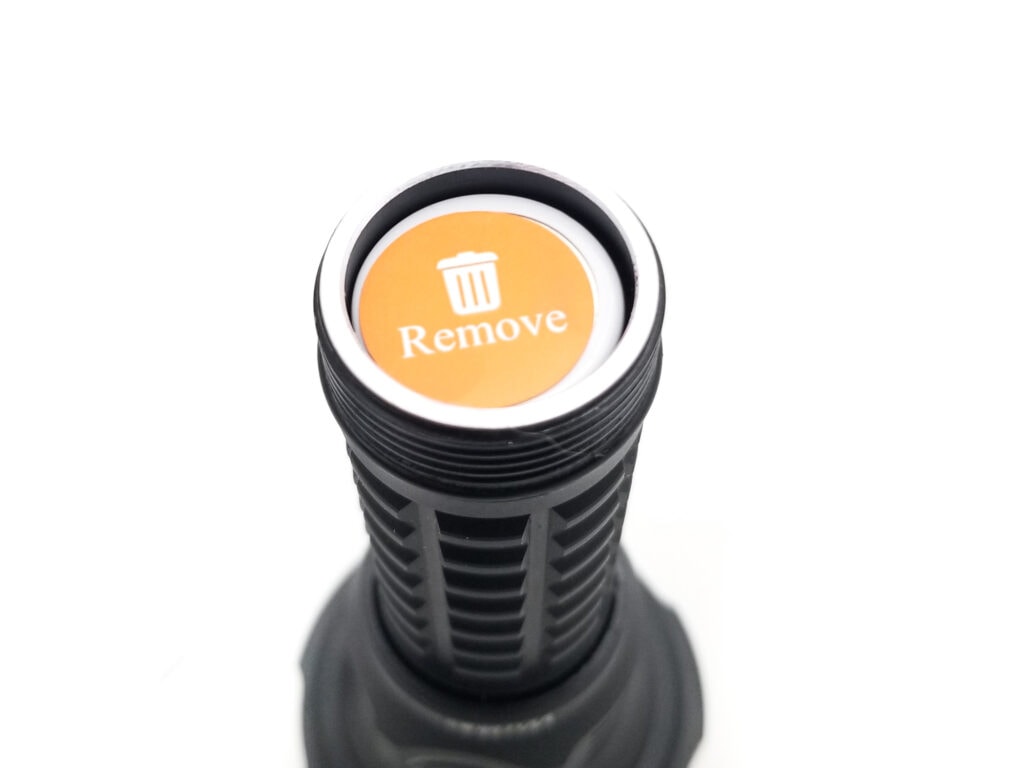
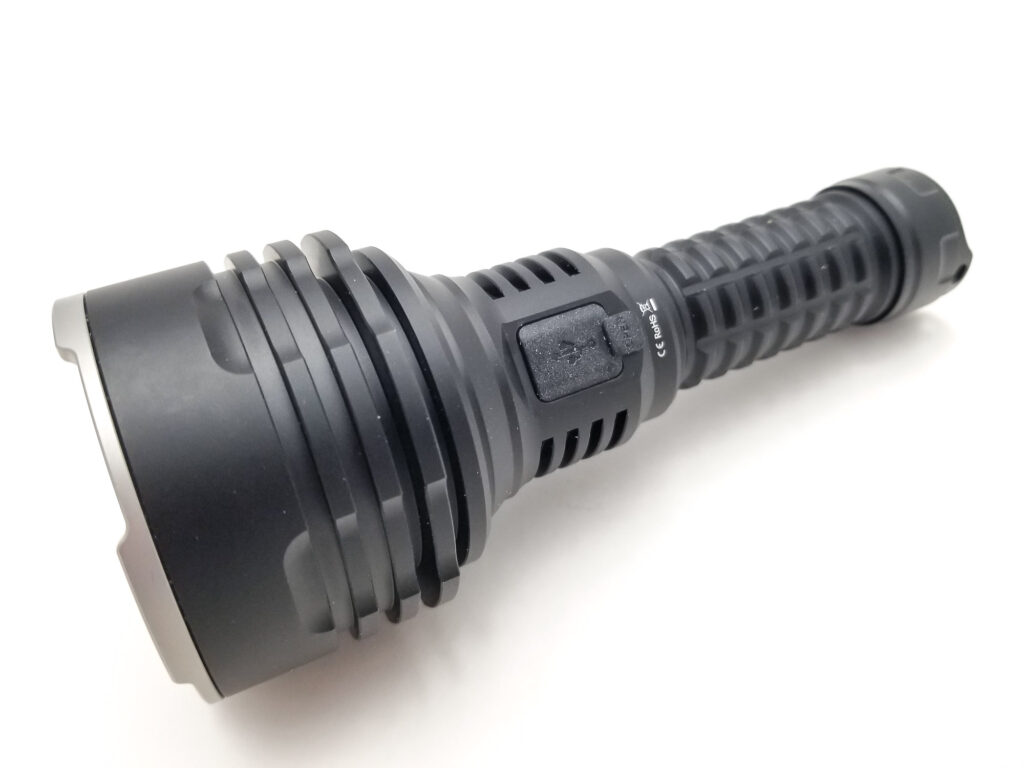
Performance test
Lumen measurements
How Lumens are Measured: Understanding ANSI FL1 Standards How Lumens are Measured: Understanding ANSI FL1 Standards: The ANSI FL1 standards specify that output in lumens should be measured 30 seconds after turning on, as this is the standardized time for measuring brightness according to the industry standard. This is why we focus on this part in our measurements. The ANSI FL1 standards require an ambient temperature of 22 ± 3°C. We record the ambient the ambient temperature to identify potential reasons for any observed discrepancies.Lumens are measured in my 50 cm integrating sphere with a Digi-Sense 20250-00 data logging luxmeter. The sphere has been calibrated with a Convoy S2+ measured to 260 Lumens and the figures are within 10% of actual. Current was measured with my Thisinde B18B+ multimeter with 14 gauge wires on banana plugs in the meter and high currents with my FY219 clamp meter with a piece of 10 gauge wire in the loop. Measurements were taken using a fully charged Wurkkos 5000 mAh 21700.
| Mode | Amps at Start | Specs | turn on | 30 sec | 10 minutes |
|---|---|---|---|---|---|
| L1 | 3.8 mA | 1 | N/A | – | – |
| L2 | 11.3 mA | 5 | 1.23 lm | 1.23 lm | – |
| L3 | 37.8 mA | 15 | 10 lm | 10 lm | – |
| L4 | 104 mA | 45 | 38 lm | 38 lm | – |
| L5 | 262 mA | 110 | 99 lm | 99 lm | – |
| L6 | 1.38 A | 480 | 331 lm | 328 lm | 325 lm |
| L7 | 5.16 A | 1700 | 923 lm | 923 lm | 443 lm |
| Turbo | 22.7 A | 6000 | 3924 lm | 3616 lm | 185 lm |
| Turbo 70 C Limit* | (not tested) | 6000 | 4145 lm | 3690 lm | 627 lm |
These numbers are typical of a FET driven SBT90.2 in a smallish single cell host: High output for a short period due to heat and voltage sag from the battery. I’m coming way under Wurkkos’ advertised figures, even for the lower modes, but close. The higher modes above L6 are way off, but I kind of expected this with the relatively low-drain Wurkkos battery. I tested Turbo with some other batteries to see how it affects the output. The results (at turn-on):
Lishen LR2170HP: 4797 lm
Samsung 50S: 4600 lm
Samsung 30T: 4736 lm
Samsung 40T: 4699 lm
Molicel P42A: 4213 lm
As we can see, the best performer (no surprise) is Neal’s wonder battery, and it’s pulling about 28 amps here. Runner up is the stalwart 30T, then the dependable 40T, the freakishly good 50S, and the once gold-standard P42A (I think my P42As are underperforming). Bottom line: The Wurkkos cell is okay and will be a good performer, but to get the most out of this light, you need high-end batteries, and even with the hottest 21700 you can get currently, it still doesn’t make 6000 Lumens. I think to get 6000 Lumens out of this light you’d need a battery crafted by an elf from Rivendell filled with unicorn pee and pixie dust.
Parasitic drain:
- Aux LEDs high (single color) 10 mA
- Aux LEDs off .09 mA
- Aux LEDs low (single color) 0.34 mA
The standby current when the aux LEDs are humming along at full whack is dramatic at 10 mA. That would drain a 3000 mAh cell in about 12 days, and a 5000 mAh cell in less than a month!
Wurkkos TS30S Pro Battery Life: Runtime graphs
How Runtimes are Measured: Understanding ANSI FL1 Standards About ANSI FL1 runtime standards: The runtime is measured until the light drops to 10% of its initial output (30 seconds after turning on). This does not mean that the flashlight is not usable anymore. The last column shows how long the light actually works till it shuts off. If there is a + symbol, it means that the test was stopped at that particular point, but the light was actually still running. This happens on certain occasions, with certain drivers, firmware, or batteries.Runtimes are measured in my 50 cm integrating sphere with a Digi-Sense 20250-00 data logging luxmeter. The sphere has been calibrated with a Convoy S2+ measured to 260 Lumens and the figures are within 10% of actual. I used the included fully charged Wurkkos 5000 mAh 21700 for these tests. The thermal ceiling was set to the factory default of 50 C.
| Mode | Specified | Measured runtime (ANSI) | Time till shut off |
|---|---|---|---|
| L6 | 3h 50m | 5h 50m | 6h 9m |
| L7 | 1h 40m | 3h 9m | 3h 16m |
| Turbo | 1h 30m | 1m 45s | 3h 47m |
| Turbo at 70 C | ? | 1h | 1h 18m |
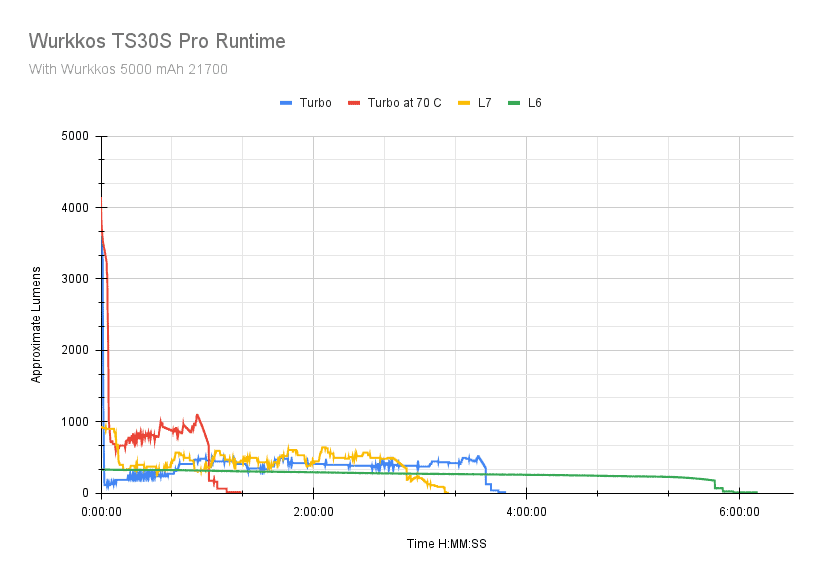
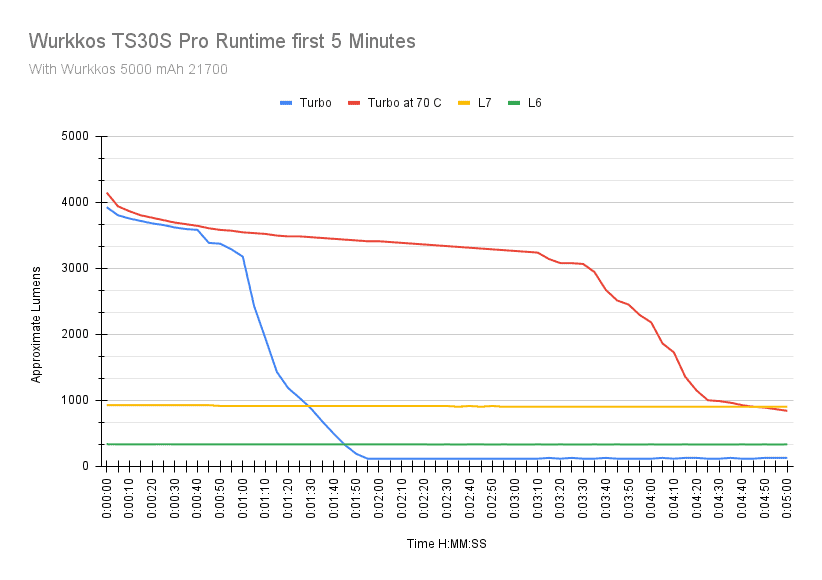
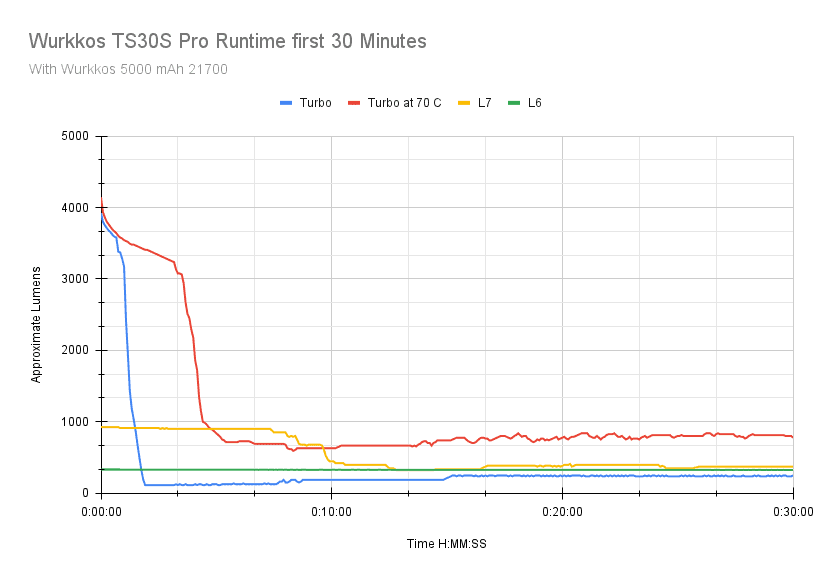
Wurkkos actually advertises runtimes and outputs on their official product page, which is nice to see, but can show just how misleading they can be since they don’t measure at the official ANSI standard. 1Lumen does, so we keep everyone honest.
Like just about every Anduril equipped hotrod flashlight in existence, you get high initial output, and depending on how high the thermal ceiling is set, fast to very fast stepdowns to very low output until the light cools off and the output throttles up. Still, the sustained output when maxing out the thermal limit to 70 C, isn’t bad, maintaining 3000+ Lumens for over 3 minutes before stepping down. The downside is short runtimes and a flashlight that’s unusable after 10 minutes since the tube heated to 65 C.
Temps? On Turbo at 25 C ambient, it’s 37 C in 5 seconds, 42 C at 10, 51 C at 60 seconds, with the output throttling down dramatically to about 150 Lumens. Sad, but not unexpected. Using a higher power battery would only truncate these periods even more. In typical Anduril fashion, the output plots aren’t linear, but change as the battery dumps. The ending voltage after the tests was consistently 2.92 volts.
Here is a comparison with some of its competitors
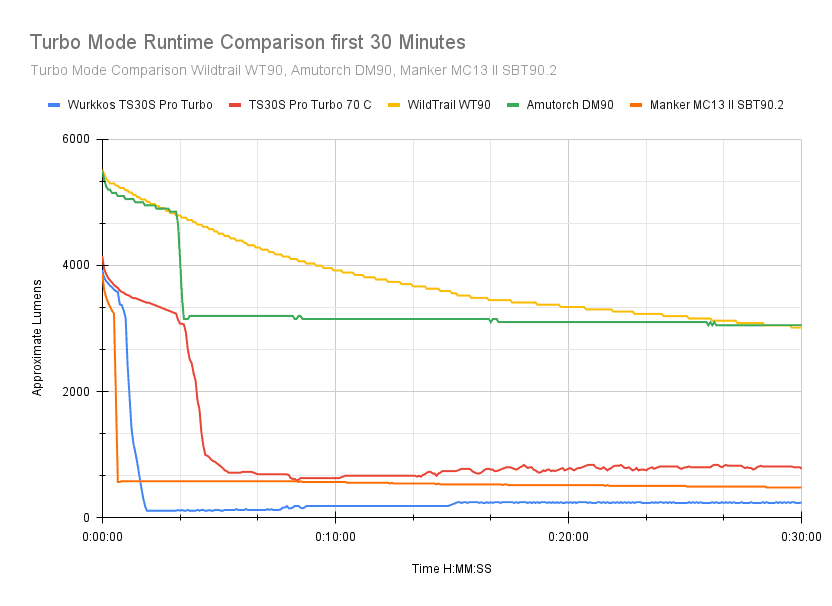
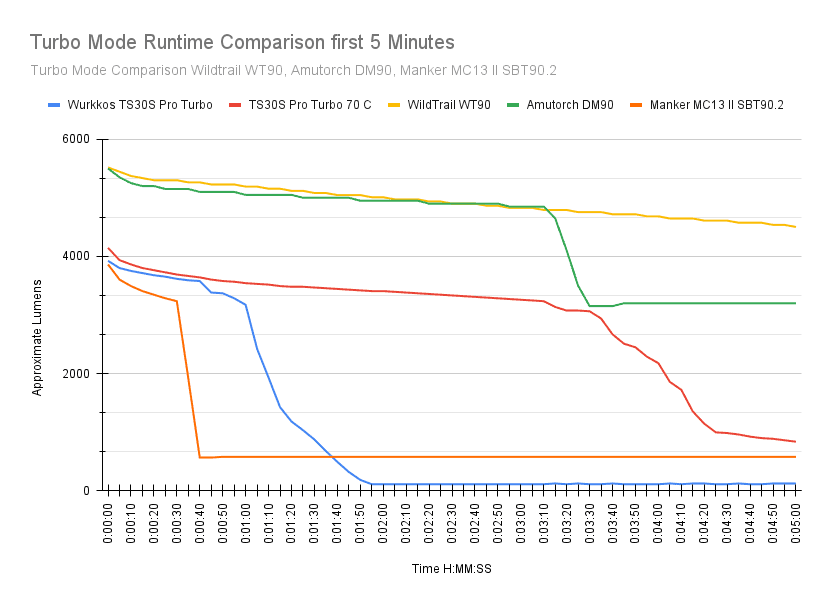
Peak beam intensity and beam distance measurements
About Peak beam intensity: Understanding ANSI FL1 Standards About peak beam intensity The calculated value of distance in meters at which the flashlight produces a light intensity of 0.25 lux. (0.25 lux is about the brightness of a full moon shining on an object). This means that the intensity has decreased so much, it becomes difficult to see darker objects, or objects that don’t reflect light. The columns ‘Meters’ and ‘Yards’ use rounded numbers.Beam distances are measured using a Uni-T UT383S luxmeter measured indoors at 5 meters using the included fully charged Wurkkos 5000 mAh 21700. Measurements taken at 30 seconds. I usually test 1000 m throwers at 10 meters, but the smaller reflector should have optimal beam convergence at 5 meters.
| Mode | Specified | Candela measured | Meters | Yards |
|---|---|---|---|---|
| L1 | 20 | N/A too low | – | – |
| L2 | 204 | 225 | 30 | 33 |
| L3 | 884 | 975 | 62 | 68 |
| L4 | 2550 | 2850 | 107 | 117 |
| L5 | 6675 | 6725 | 164 | 179 |
| L6 | 27,475 | 22,125 | 297 | 325 |
| L7 | 95,100 | 64,800 cd | 509 | 557 |
| Turbo | 295,000 cd | 238,200 cd | 976 | 1067 |
| Turbo* at start* | 273,250 cd | 1045 | 1143 |
Wurkkos’ advertised figures are close to mine. The numbers on Turbo are within 40 meters of advertised, which is a lot better than the first TS30S, in part thanks to the altered reflector. For a single cell, compact thrower, these are good numbers. The only real competition to this light is the Thrunite Catapult Pro (with the SFT70) and Noctigon K1 (also available with the SBT90.2). To get better figures, you’re upgrading to the Acebeam K65GT, Mateminco MT90, Wildtrail WT90, or Thrunite TN42 (to name a few). These are multi-cell throwers with 70-80 mm reflectors and twice or three times the price.
Beamshots
I compared the Wurkkos TS30S Pro to some other thrower flashlights. Each is capable of 1000 meters of throw or more. Photos taken with my Samsung Note 8. The fence is about 95 meters away and the camera is set to 0.3s ISO 200 and 5000K WB. The water tower is about 950 meters away, with the Note 8 set to 0.5s and 400 ISO with 5000K WB.
Beamshots of the following flashlights compared at 950 meters and 40 meters:
- Acebeam P17 Defender
- Convoy L21B
- Acebeam L19 V2
- Thrunite Catapult Pro
- Wurkkos TS30S PRO
- Manker MC13 II SBT90.2
- Mateminco MT-911 (with SBT90.2 clone)
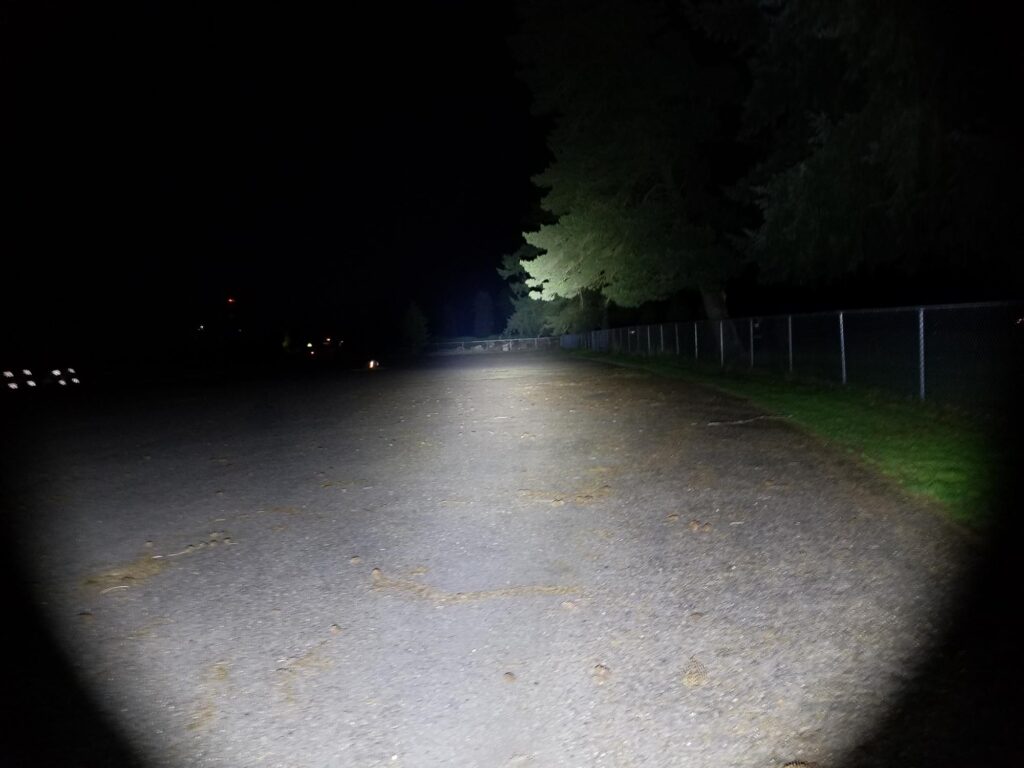
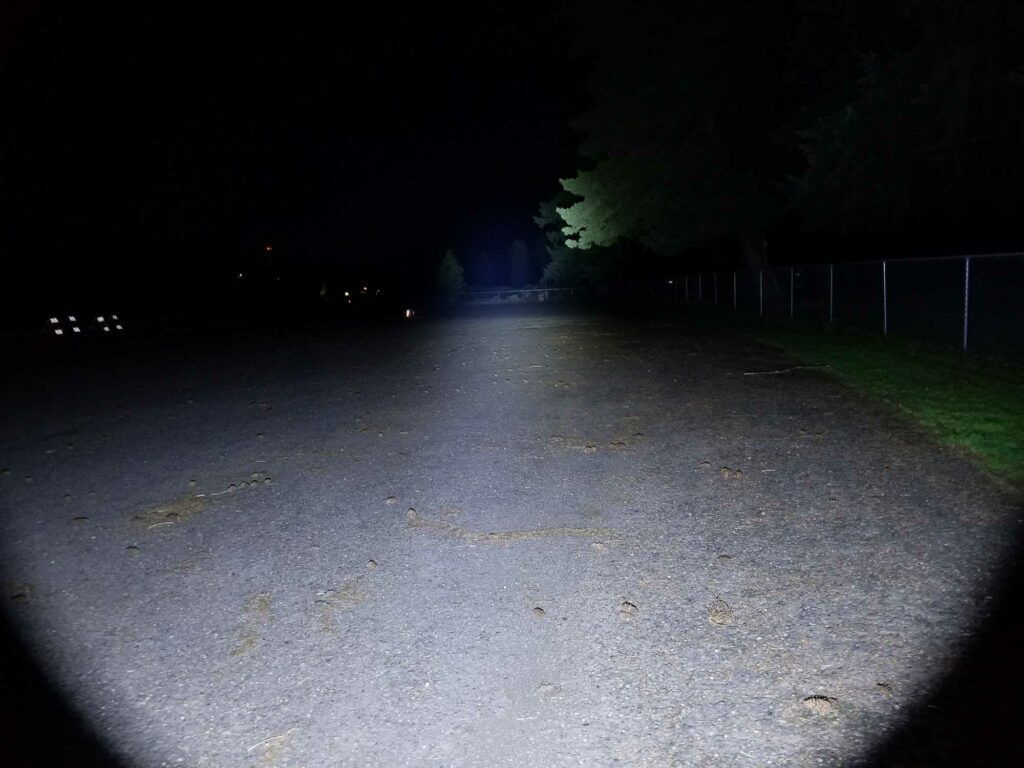
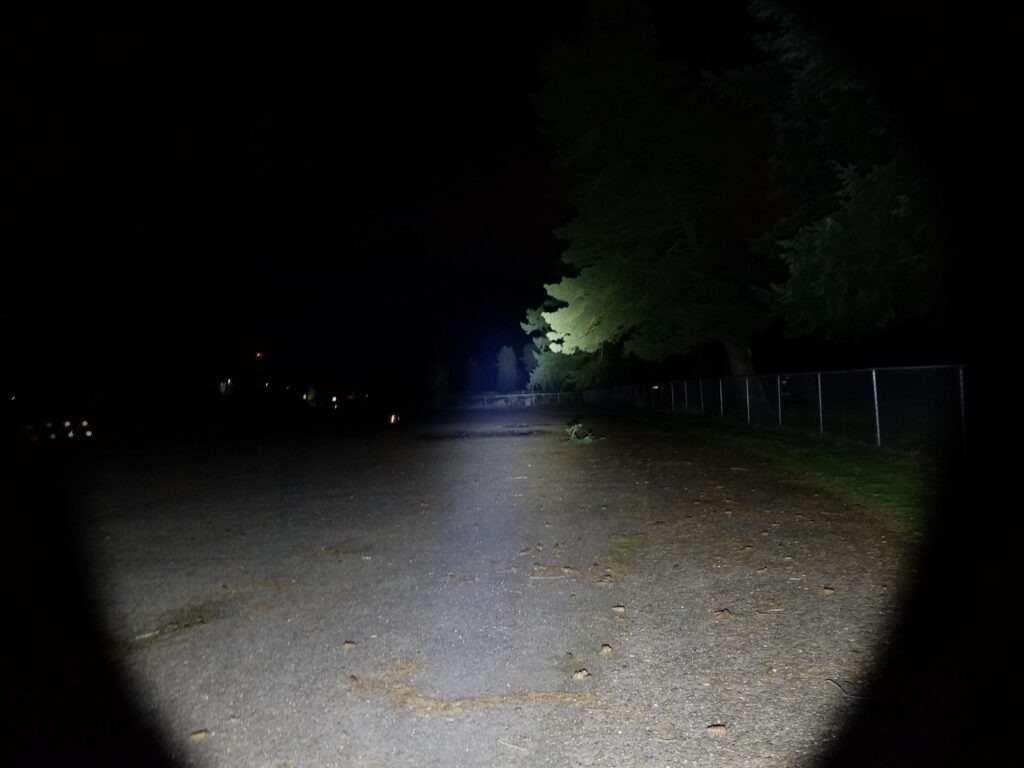
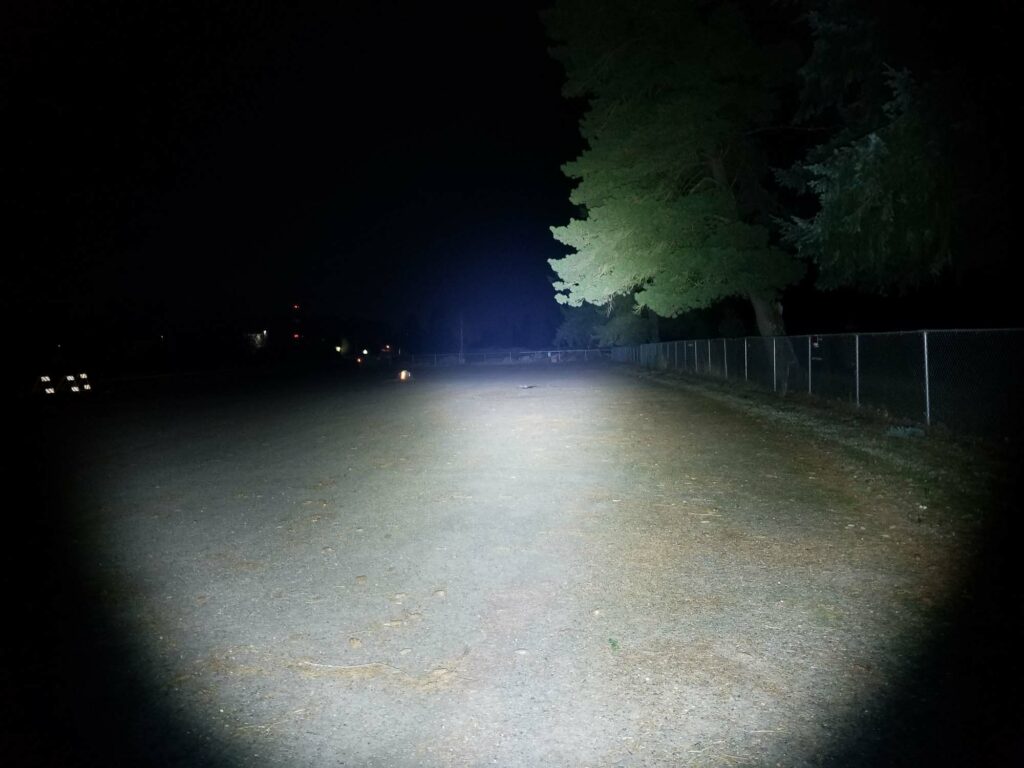
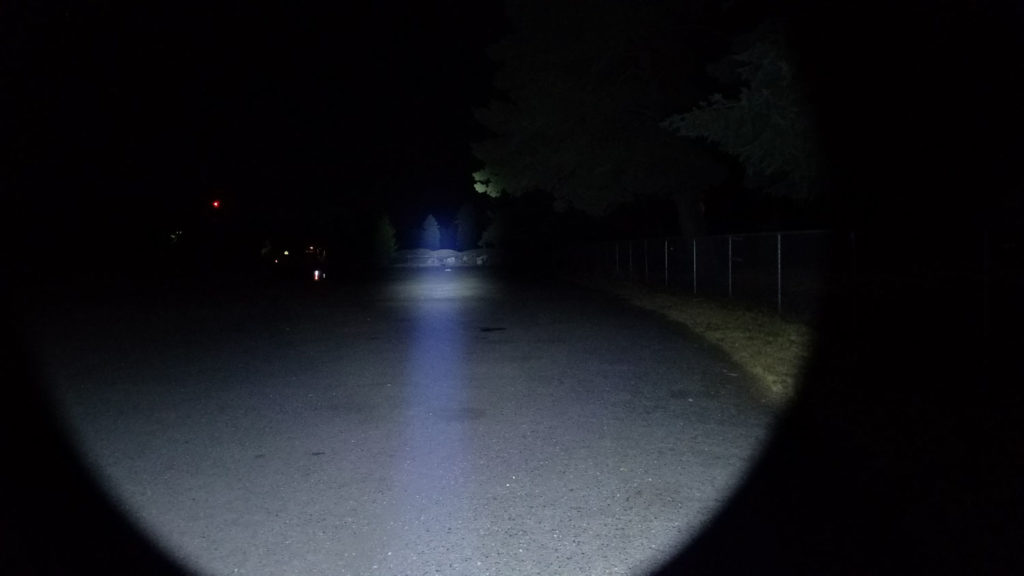
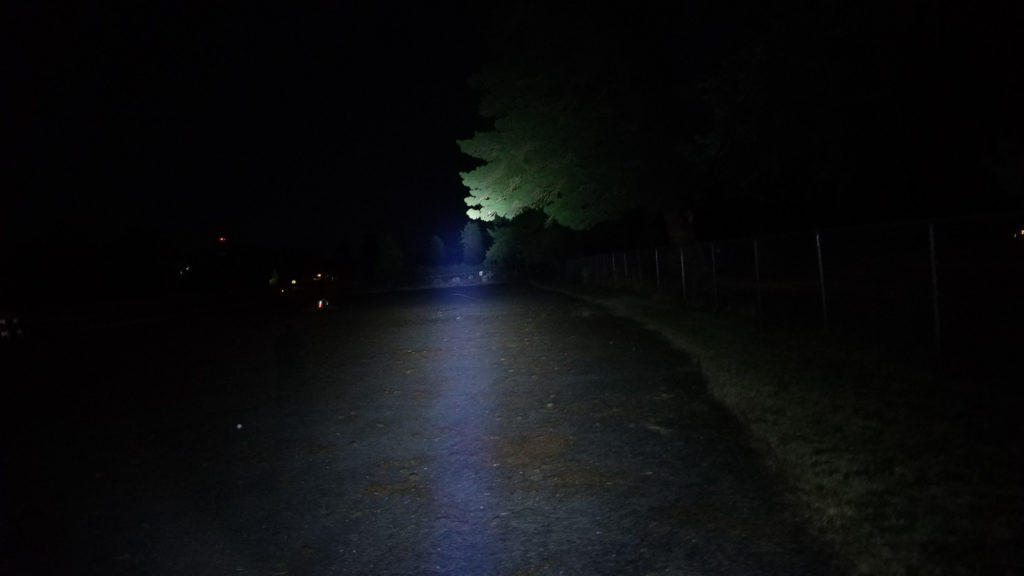
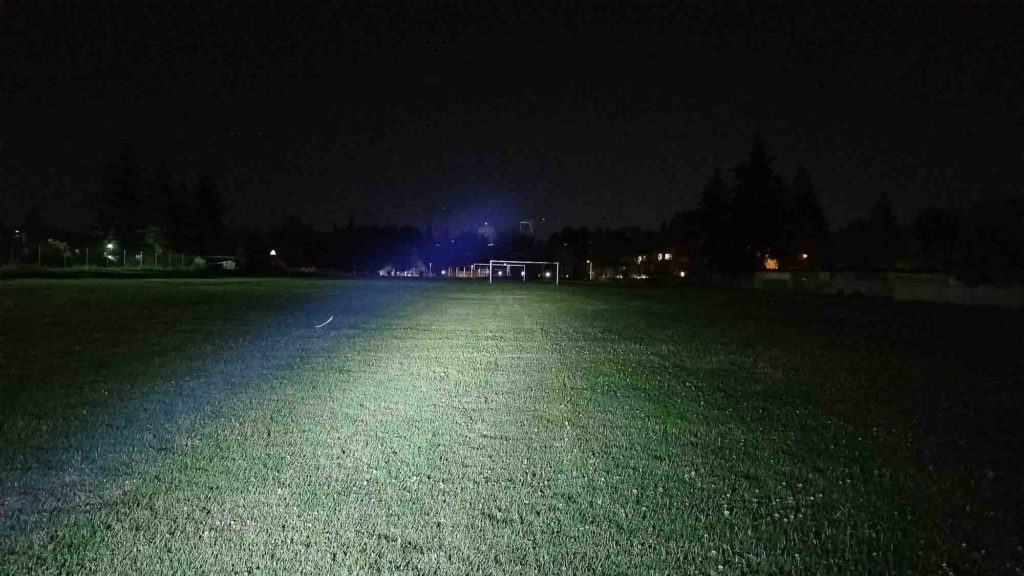
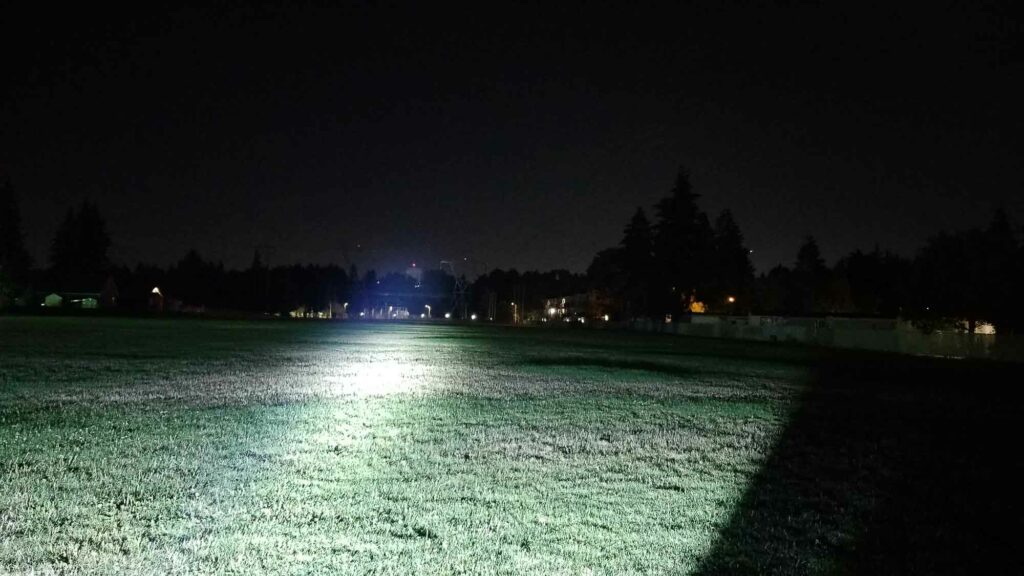
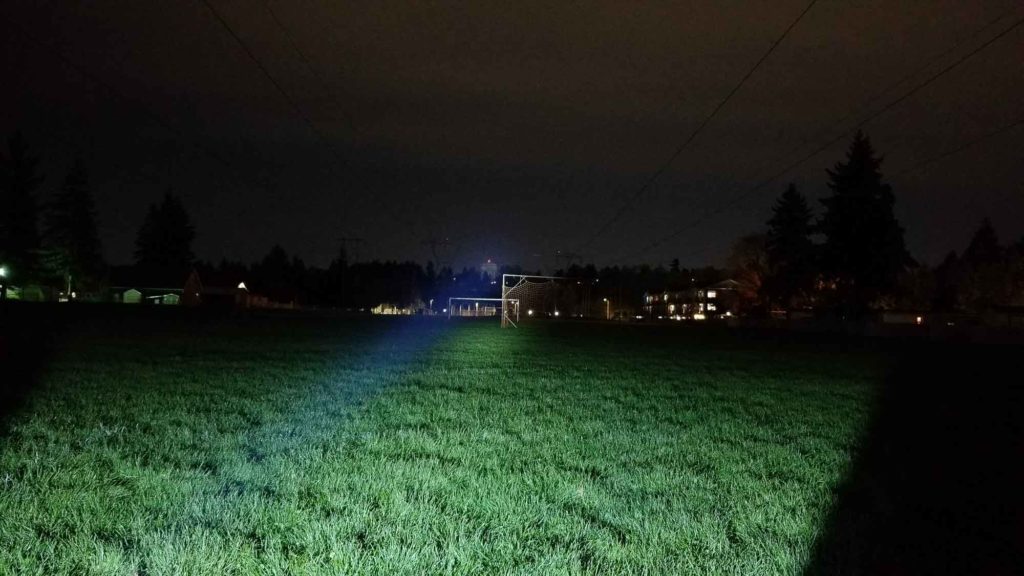
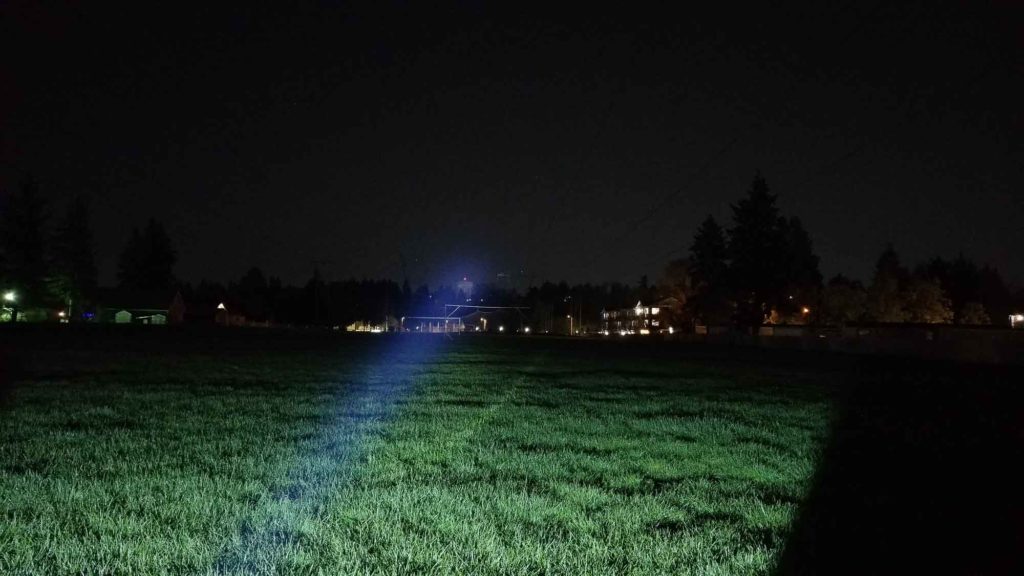
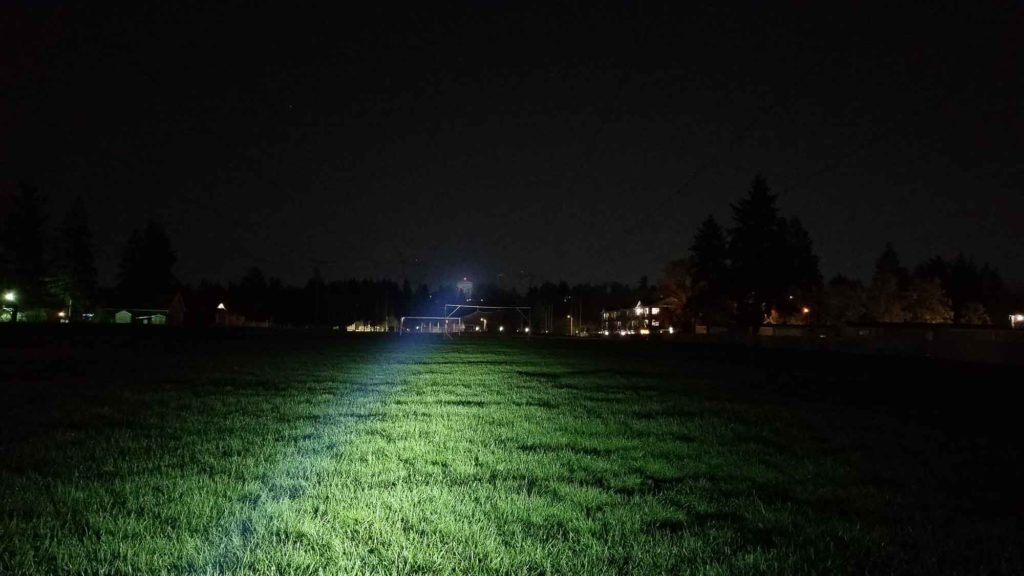
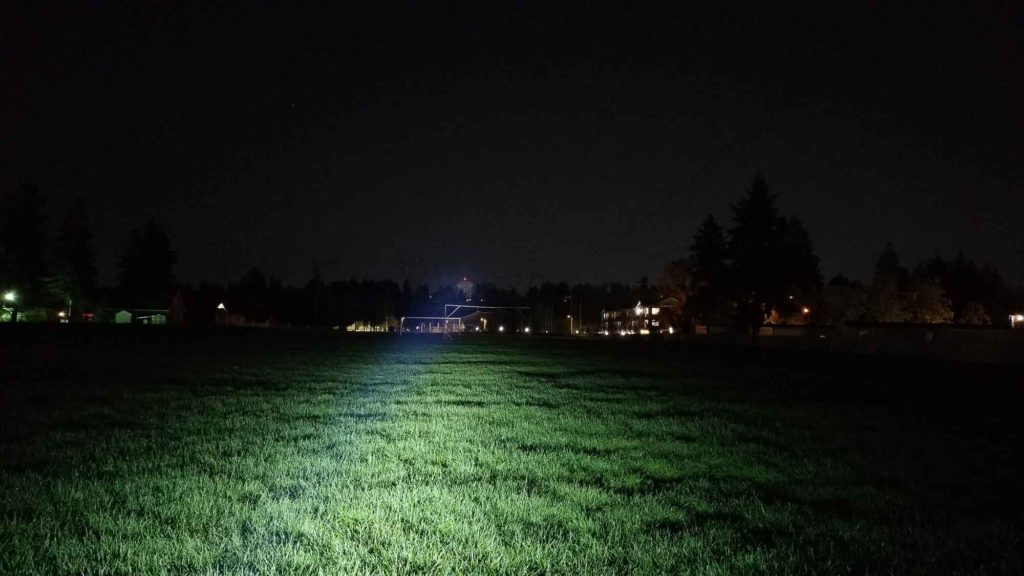
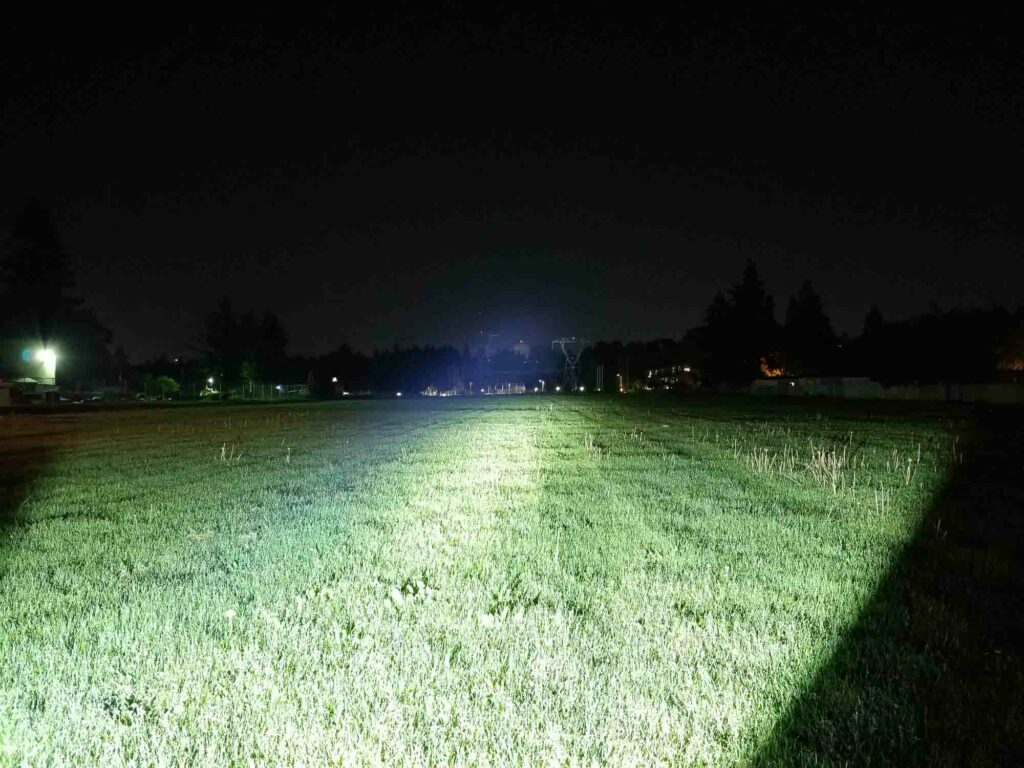
Disclaimer: This flashlight was sent to me for review at no cost by Wurkkos. I have not been paid to review, nor have I been holding back on problems or defects.
Final Verdict
Pros
- Great build quality, fit and finish
- Very affordable-the cheapest SBT90.2 light available
- Anduril 2
- Fast, 3 amp onboard USB type C charging with power bank
- Improved beam distance
- Handles nicely
Cons
- Anduril 2
- Very fast stepdowns and quick heating
- Beam has some rings
- Aux LEDs on the highest setting have very high parasitic drain
Explanation on star ratings:
1: Avoid: a match would be a better choice – 2: Poor: significant defect or issues; almost unusable – 3: Average: some defects or issues; but still usable 4: Good: recommended (minor issues) – 5: Great: highly recommended

4 stars: ★★★★
While our star rating provides a reliable indicator, we encourage you to read the full review to make an informed decision based on your own needs and preferences.
One flashlight to rule them all? Well not really, unless you’re on a budget since this new Wurkkos TS30S Pro retains all of the good things that appealed to buyers of the original TS30S, with meaningful improvements to the performance and usefulness. For about $70 US, it represents probably the cheapest light available with a SBT90.2, and comes with a battery without cheaping out in other areas like cutting corners on quality control. No other production flashlight with an SBT90.2 comes close except the Convoy L8. Anything else and you’re dropping $100+ for a Noctigon K1 (which doesn’t have quick charging).
I really like this flashlight, and even though it didn’t meet the factory specs (they’re somewhat laughable), it did very well in key areas: Beam distance and output. It has all of the requisite features of a modern flashlight with Anduril 2, onboard USB type C fast charging, power bank functionality with 3 amp discharging, and 21700 support. It also looks nice and flashlight-y and handles really great. With a holster, this would be a good light to take hiking since it’s not that heavy.
While some may rate the beam of the original TS30S as a tad better than this one, I’ll take the artifacts for more throw. There’s not much I don’t like about this light, but I have an ingrained disdain for super-complex UIs like Anduril 2, and while no other UI can match it for adaptability and customization (especially being able to tweak the thermal limit), for a new user, it can be a bit daunting. The step downs on Turbo can be quick and dramatic, and increasing the thermal limit helps a lot, it makes the light less usable since it heats up to uncomfortable levels in minutes. In the grand scheme of things though, none of that matters too much since the TS30S Pro is the cheapest SBT90.2 ring available, and that puts it within reach of the budget light enthusiast. 4 stars for the Wurkkos TS30S Pro.
Buy your Wurkkos here
Buy directly from Wurkkos with the following 15% off coupon: FANS15
1lumen selects and reviews products personally. We may earn affiliate commissions through our links, which help support our testing.